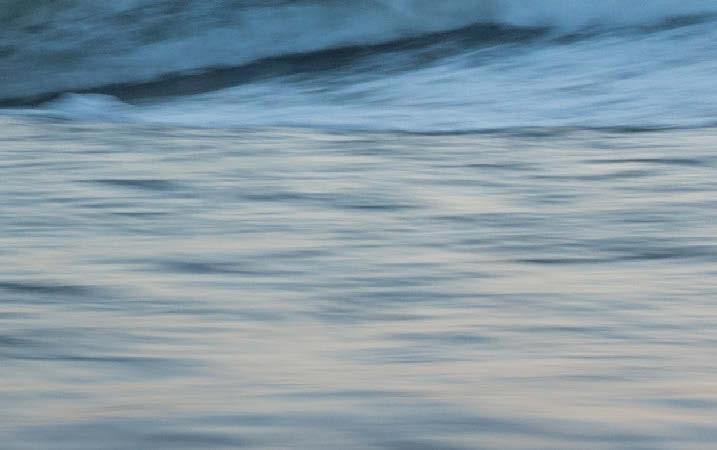







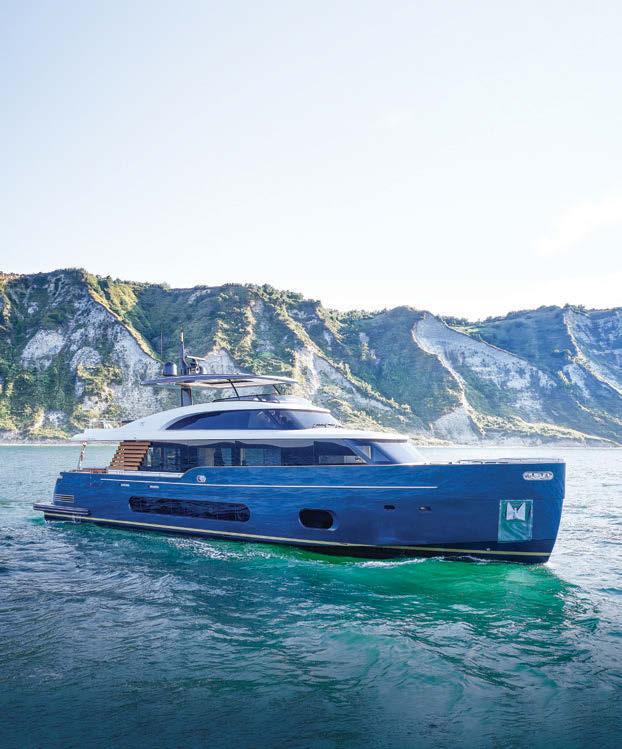












































DANA POINT— On Jan. 2, whale watching passengers onboard Capt. Dave’s Dolphin & Whale Watching Safari boat in Dana Point witnessed the scene of a lifetime when they encountered a gray whale giving birth to a calf.
At first, the sighting appeared to be a normal migrating gray whale. However, as the boat slowly moved closer to the animal, the crew noticed it was behaving sporadically. Passengers and crew saw the color red in the water and thought it might have been kelp— they were wrong. It was a newborn calf coming up to the surface.

“For a minute, many of us thought it may be a shark or predatory event,” says Matt Stumpf, Capt. Dave’s drone operator in a statement. “But no, instead of the end of life, it was the beginning of a new one.”

After surfacing, the newborn calf began learning to swim and bonding with its mother. Finally, the cow brought the calf over to the boat, almost as if she wanted to show off her baby and say hello.
“As far as I know, no one has filmed a gray whale giving birth or even seen it before,” says Captain Dave Anderson, owner of Capt. Dave’s Dolphin & Whale Watch-
ing Safari. “We were right there when it happened. We have footage of the whale bringing her calf over to our boat.”
The timing of the entire birth is unknown as it was only occurring for a couple of minutes when the whale watching boat arrived.

Gray whales migrate annually along the U.S. west coast, swimming 10,000 to 12,000 miles round-trip. It is one of the longest migrations of any mammal. The whales travel from their feeding grounds in the Bering and Chukchi Seas near Alaska to Baja’s mating and birthing lagoons and back again.
Gray whales prefer to give birth in Baja’s warm and protected lagoons. The lagoons offer safety from predators such as orcas and warm water for calves who have not yet built up a thick layer of blubber.
Although most gray whales do give birth in Baja, there are times when calves won’t wait and are born during the migration.
“Witnessing this gray whale birth was one of the best things I have ever seen,” said Stumpf. “And not that it is just coming to the world, but already from the video, you can see its personality. I wish the best for this pair as they make their way down to the lagoons in Baja and then back up to the feeding grounds. It’s a long
Though red is never what you want to see in the water, this time it was good news as a gray whale welcomed her calf as the 2023 New Year marine baby of Dana Point.
and dangerous journey for them.”





Gray whale calves are about 15 feet long when born and will gain over 50 pounds a day from feeding on their mother’s milk. Gray whale mothers can lose 30 percent of their body weight by nursing one calf on milk that contains over 50 percent fat.
Gray whale adults average between 40 to 50 feet in length and weigh 30 to 40 tons.
With a variety of year-round whales,


more dolphins per square mile than anywhere in the world, pristine coastline, calm seas, the first and longest-running annual Festival of Whales, and a captivating harbor minutes from the open ocean, Dana Point, California continues to earn the title as the Dolphin and Whale Watching Capital of the World.
To watch a video of the mother and her calf visit https://www.youtube.com/ watch?v=umajENuHqaw.
Valentine’s Day is right around the corner, and it’s not just for love birds- it’s also for love fish.
It is believed by captains, sailors, and mates that dorado, when older, romantically pair up in couples. While animals that mate for life are rare in the animal kingdom, crews often witness this scenario. For example, a mate is almost always nearby when a larger male dorado is spotted. Rumors created by sailors tell stories of dorado exhibiting a tear-jerking behavior

where they mate for life, but if one of two is caught, the other will linger in that same area for life, waiting for its partner to return.
Young dorados, also called mahi-mahi or dolphinfish, can often be seen traveling in groups of up to 50 or more fish to minimize their risk of being attacked. As these fish age, they tend to travel in smaller pods and, in some cases, may travel in only pairs. This behavior is believed to have sparked the rumor that they mate for life.

Unlike marine mammals that give birth, dorados are born from eggs and are not given sup-




Editorial, P.O. Box 1337, Newport Beach, CA 92659 thelogeditor@thelog.com.
Write to:
port or nurture from their mother or father. Therefore, survival often depends on their ability to adjust to their surroundings quickly and find shelter in large groups of young dorado.
The dorado fish is one of the fastest-growing fish, reaching sexual maturity within the first 6 – 12 months of life. Female dorado fish can lay anywhere from 100,000 –1,000,000 eggs at a time and can lay eggs up to two to three times a year. Fertility and lay-
ing eggs can occur at any time during the year because these fish do not have a primary mating season. Their average lifes-
“My Grandad Harry Adams skippered a ship named the Portola in San Diego in the late 50s and early 60s to the best of our knowledge. I have some items that are connected to the Portola and if there is interest would like to return them.”
Adams
pan is three to four years, with a few fish sometimes living to the age of five— these lover-fish live fast and die young.
“Each LandCare team member acts with self-assurance, and communicates openly and honestly to ensure we meet the goals for your property.”
—Alex IvanovHave an opinion about something you read in The Log? The Log The name mahi-mahi means “strong” in the Hawaiian language— and they’re so strong they have to name them twice. Shutterstock image By Katherine M. Clements
DANA POINT — The return of the annual 2023 Festival of Whales will parade Dana Point from March 4-5 for the 52nd annual event. On March 3, the Ocean Institute will host the Welcoming of the Whales Kickoff Ceremony and Reception for free from 4:45- 9 p.m. Festival highlights include an opening day parade, street fair, arts-and-craft shows and sales, classic car exhibits, paddling and sailing opportunities, boating extravaganza, sand sculpting, concerts on land and water, environmental activities, educational opportunities, interpretive crafts, kids activities, fun food, and of course, whale watching excursions on a variety of vessels or whale watching from Dana Point Headlands Conservation Park. For an entire schedule of events for the weekend, please visit https://festivalofwhales.com/dana-point-festival-ofwhales-event-listing/.
SAN DIEGO — The Port of San Diego is releasing the results of its first study on carbon sequestration and storage in eelgrass beds. In 2021, the United States Department of Transportation’s
Maritime Administration (MARAD) awarded $150,000 through the Maritime Administration’s Maritime Environment and Technical Assistance (META) program to the Port to assess how much carbon is stored in San Diego Bay’s eelgrass beds and how much carbon eelgrass may continue to sequester into the future.
Eelgrass and other coastal “blue carbon” ecosystems can rapidly capture and store large amounts of carbon. Like all plants, eelgrass absorbs carbon dioxide, which is stored as organic carbon in its plant material and produces oxygen through photosynthesis. When land plants die, their carbon is released into the atmosphere as CO2. Unlike land plants, eelgrass is submerged in water, which prevents the release of CO2. Instead, the organic carbon is sequestered into the sea floor sediments. If left undisturbed, this carbon can remain trapped in eelgrass sediments for thousands of years. Eelgrass habitats cover a small fraction of the area forests do on land, yet they can store carbon at rates 30 to 50 times greater than forests.
The study is funded through MARAD’s Maritime Environmental and Technical Assistance (META) Program, which supports and promotes emerging technologies to improve environmental sustainability in the maritime industry. Carbon sequestration is a crucial area of research that can inform and support ports and the maritime sector in reducing greenhouse gas emissions.
Some key findings from the study, conducted between Oct. 2021 and June
2022, include the following:
• The bay’s eelgrass beds currently contain 1.7 million metric tons of CO2, equivalent to the same amount of CO2 emitted by more than 370,000 cars annually.
• Since 1993, the Port and the Navy have conducted bay-wide eelgrass surveys every few years. Presently, San Diego Bay has nearly 2,600 acres of eelgrass, which amounts to 50 percent of all the eelgrass in Southern California and about 17 percent in the state.

• As much as 73 percent of the bay’s carbon is stored in the sediments of the South Bay.
• Creating or restoring eelgrass habitat could lead to more carbon storage, potentially supporting the Port’s greenhouse gas emissions reduction efforts.
In addition to storing carbon, eelgrass also helps improve water quality, provides protection from waves that erode shorelines, and is a vital habitat and food source for many animals in and around the bay.
Together, the Port, the Navy, and MARAD have expressed hope to shed more light on this little-studied coastal ecosystem and its potential to support local and regional carbon sequestration efforts. Over the next year, the Port will continue studying the relationship between eelgrass and carbon storage. In addition, through the META program, MARAD has committed $175,000 to a second year of research. A third part-
ner, the U.S. Navy, has joined the effort, allowing the team to study carbon sequestration and storage in the Navy’s eelgrass restoration areas.
This study is an essential component of the Port’s ongoing efforts to protect the resources San Diego Bay provides to the region and to support state and local climate planning efforts. This study also complements the Port’s growing portfolio of nature-based solution projects:
• Blue Economy Incubator projects – San Diego Bay Aquaculture, ECOncrete, and Sunken Seaweed.
• Pond 20 – an 85-acre proposed wetland mitigation bank to restore coastal salt marsh habitat with the added benefits of carbon sequestration and ecological enhancement.
• Native Oyster Living Shoreline Project – created oyster reefs to recruit native oysters, prevent shoreline erosion, and help with carbon sequestration.
• Restorative Aquaculture Planning – initiating the planning effort to permit seaweed and shellfish farming for restorative benefits, such as water quality improvements, biodiversity enhancement, and carbon sequestration.
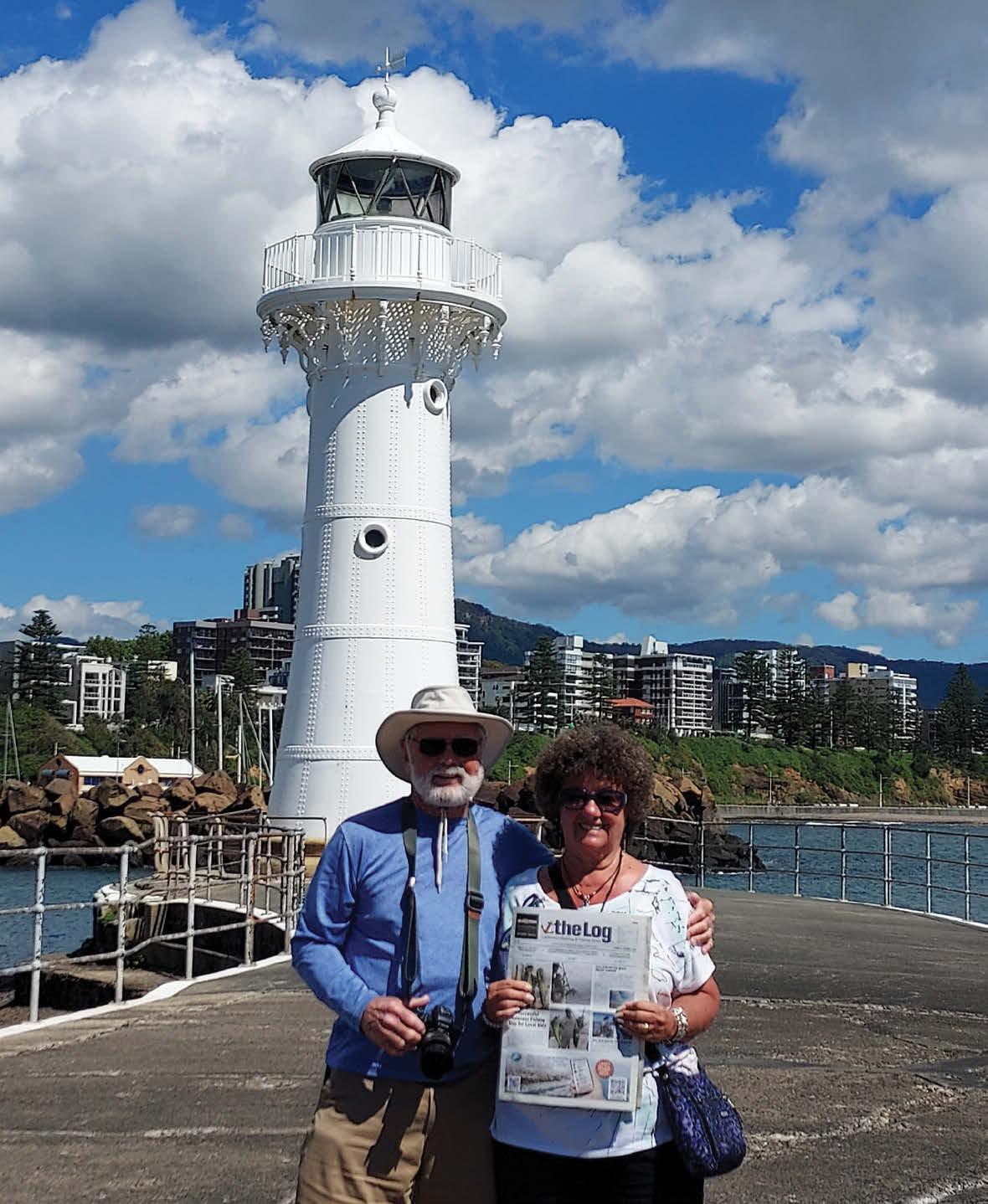 By David Weil
By David Weil
I was injured aboard a tour boat on an inland lake in California when I fell into an open hatch. I asked the owners of the boat to pay for my medical expenses and to compensate me for my time away from work, but they refused to talk to me and it seems that my only option now is to file a lawsuit. I have talked to a couple of attorneys about my case and they indicated that maritime law does not apply on an inland lake and as such the boat is not subject to any kind of regulation. If this is true, do I have any recourse?
David Weil is the managing attorney at Weil & Associates (www. weilmaritime.com) in Seal Beach. He is certified as a Specialist in Admiralty and Maritime Law by the State Bar of California Board of Legal Specialization and a “Proctor in Admiralty” Member of the Maritime Law Association of the United States, an adjunct professor of Admiralty Law, and former legal counsel to the California Yacht Brokers Association. If you have a maritime law question for Weil, he can be contacted at 562-799-5508, through his website at www. weilmaritime.com, or via email at dweil@weilmaritime.com.
The Log’s taken you all over California ... Now it’s your turn to show us where you’ve taken The Log Email your photo, contact information and details about your trip to thelogeditor@thelog. com
ANSWER: Personal injury claims are evaluated through the application of negligence law principles, regardless of where the incident occurred.
Broadly speaking, “negligence” is a breach of a duty owed to someone, where that breach causes an injury or where the victim suffers some other form of harm. The “duty” is evaluated by looking at how a reasonably prudent person would act under the same circumstances. This is often established by a statute or regulation, or by the customs and practices of people who participate in a particular activity. In the context of a personal injury claim, negligence is often found where the injury was caused, in whole
Please see ATTORNEY, PAGE 7
Founded in 1971
NO. 1198 JANUARY 20 - FEBRUARY 2, 2023

WRITE TO: P.O. Box 1337
Newport Beach, CA 92659 (949) 660-6150 (800) 873-7327 Fax (949) 660-6172
EDITORIAL/CREATIVE (949) 660-6150
Editor and Publisher
Duncan McIntosh, Jr. duncan@goboating.com


General Manager Kathleen Ford kathleen@goboating.com (949) 519-4745
Editor Katherine Clements katherine@goboating.com
Graphic Artist Meredith V. Ewell
Contributors
J.R. Johnson, Bob Vanian, Catherine French, David Weil, Capt. Pat Rains
ADVERTISING SALES (949) 660-6150 Fax: (949) 660-6172 Susanne Kirkham-Diaz (949) 503-7693 susanne@goboating.com
CLASSIFIED ADVERTISING (800) 887-1615
Jon Sorenson jon@goboating.com
Is your pet as avid a boater as you? Send The Log pictures of your four-legged first mate. Email your photo, contact information and a description about your pet and boat to thelogeditor@ thelog.com


SUBSCRIPTION SERVICES (800) 887-1615 jon@goboating.com
“Guest sailor Mazzy Star waiting to tack on Olde Blue (a 1975 Ericson 29) out on the Pacific Ocean outside Oceanside, Ca.,” said Scott Matz in and email to the Log
POSTMASTER: Send address changes to The Log, PO Box 1337, Newport Beach, CA 92659.
SUBSCRIPTION PRICE: One year, $39.00 by third class mail. Subscriptions are transferable but not refundable. Call us at (800) 887-1615.
The Log is published every other Friday and distributed throughout Southern California.
QUESTION:
I was injured on an inland lake tour boat, but they refused to compensate me for my medical bills. Do I have any recourse?
or in part, by the failure to adhere to a safety standard, practice, or regulation.
Our reader was advised by an attorney that “maritime law” does not apply on an inland lake, but it is actually more accurate to say that an inland lake is not subject to federal maritime jurisdiction. “Maritime law” may be defined as a set of legal rules, concepts, and processes that relate to navigation and commerce by water. “Jurisdiction” is the right and power of a court or regulatory agency to interpret and apply the law, and “federal maritime jurisdiction” may arise in connection with an incident that occurred aboard a vessel on “navigable waters.” And “navigable waters” refer to bodies of water that are navigable to the ocean or that cross over state lines (such as Lake Havasu or Lake Tahoe).
This type of legal analysis, requiring everything to be defined in multiple layers, is common in complex cases. Here, we can continue this exercise by picking apart the definitions of “vessel” and a boat that is “on the water,” but we’ll save that for another day.
Here, our reader was advised that the inland lake where he suffered his injuries does not fall within federal maritime jurisdiction, and as such the tour boat in question will not be subject to Coast Guard inspection that would otherwise be required for vessels that carry passengers for hire. Unfortunately, the State of California has enacted very few laws concerning the operation of these boats, leaving the operation of passenger vessels on California state waters almost completely unregulated. This does not, however, relieve the owners and operators of the boat from their duty to operate a safe vessel.
As noted above, negligence is evaluated by how a reasonably prudent person would have acted under the same circumstances, and this test will be used regardless of the type of boat or whether it carries passengers for hire or the waters upon which it sails. In this case we would need to evaluate whether the standard of care applicable to the operation of the boat would have required the crew to take steps to prevent our reader from falling into the open hatch. This standard of care may be derived from a wide range of sources.
Regardless of whether the Coast Guard has the authority to inspect a vessel, Coast Guard regulations may be used to establish a “standard of care” for the safe operation of a vessel if a reasonably prudent person would follow those regulations under the same circumstances. And, notwithstanding that California has enacted very few laws relating specifically to the safety of passenger vessels on state waters, other state and local regulations may be applicable.

For example, the California Supreme Court has held that workplace safety
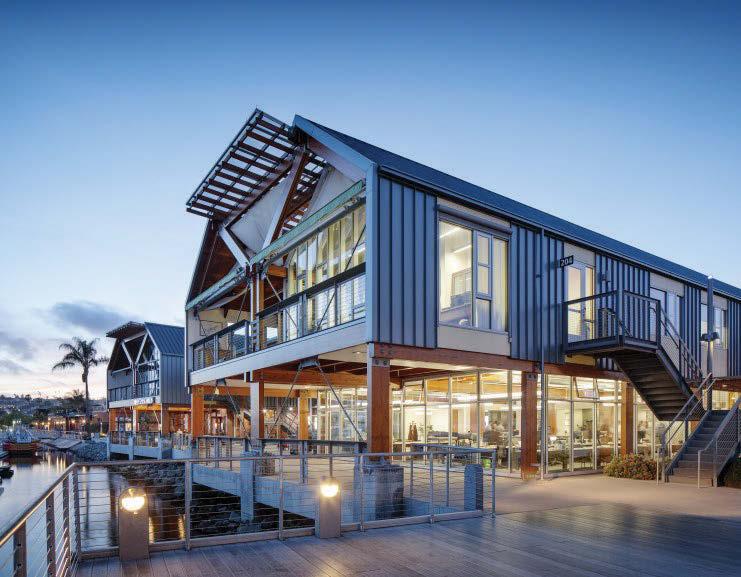
standards enacted under Cal OSHA are in place for the benefit of anyone who is legally present at the workplace. For the purposes of OSHA regulations, a vessel operated as a tour boat is deemed to be a “workplace,” and those regulations do in fact require an open hatch in a floor to be guarded by a barricade or attended someone who can warn people of the hazard. Our reader may therefore be able to take advantage of workplace safety regulations to establish the negligence of the boat owner.
If our reader’s claim evolves into a lawsuit, his attorney will probably retain an expert witness to establish the standard of care. These experts are not required to be licensed by the court or
any agency, but their background will be scrutinized by the judge and jury to evaluate their credibility. Experts in boat operation cases are often retired Coasr Guard officers or insurance claim investigators. Regardless of the method for evaluating the hypothetical actions that would have been taken by a reasonably prudent person, the owners of the boat in our reader’s case may be found negligent even if no specific laws or regulations were violated.
Negligence is very difficult to evaluate in the abstract without knowing all of the relevant facts, so this discussion is intended only as a general overview of a maritime personal injury claim. As always, an experienced maritime attor-
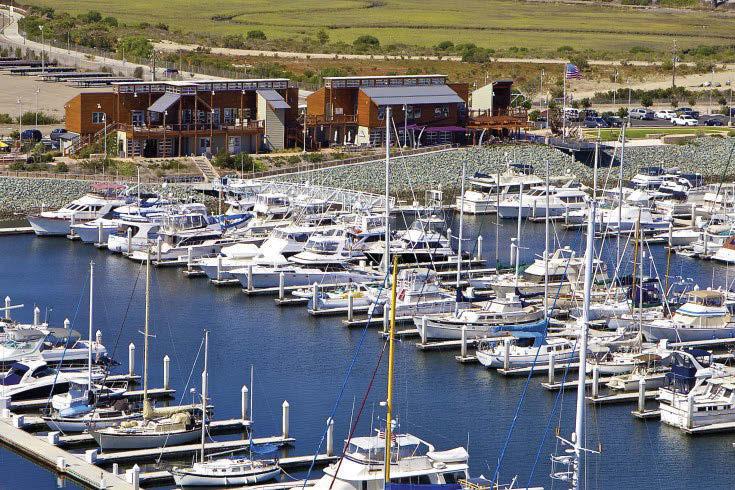
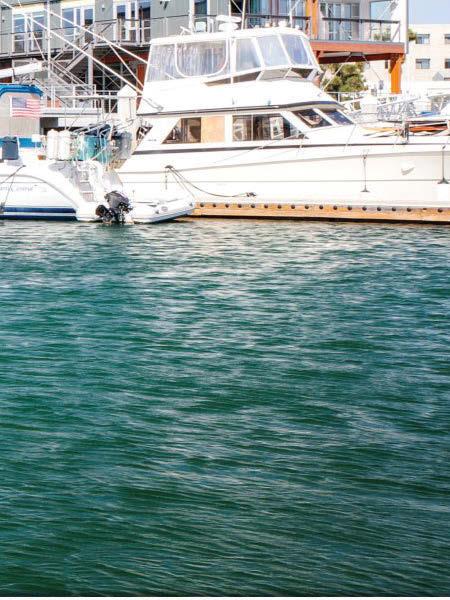


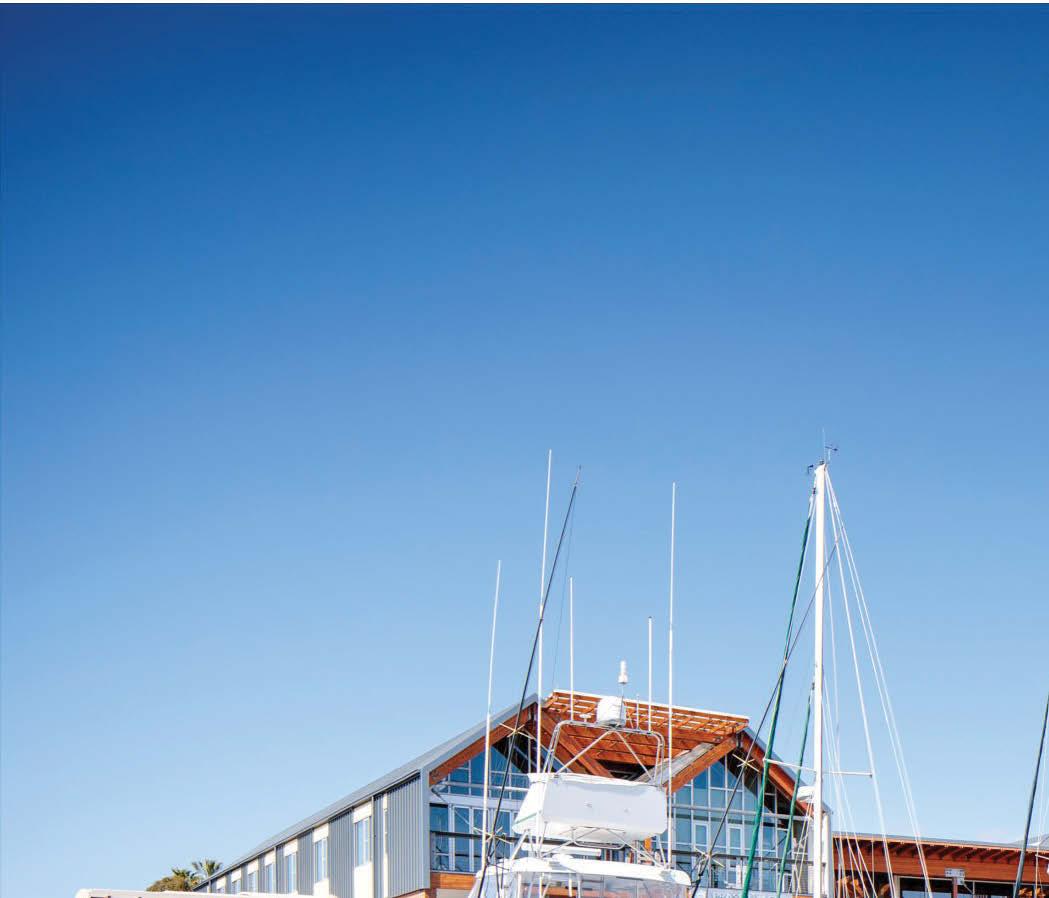
ney should be contacted for questions regarding a specific case.
David Weil is licensed to practice law in the state of California and as such, some of the information provided in this column may not be applicable in a jurisdiction outside of California. Please note also that no two legal situations are alike, and it is impossible to provide accurate legal advice without knowing all the facts of a particular situation. Therefore, the information provided in this column should not be regarded as individual legal advice, and readers should not act upon this information without seeking the opinion of an attorney in their home state.





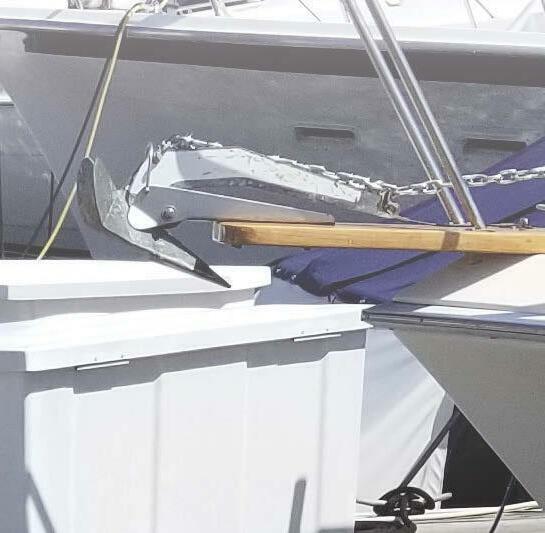
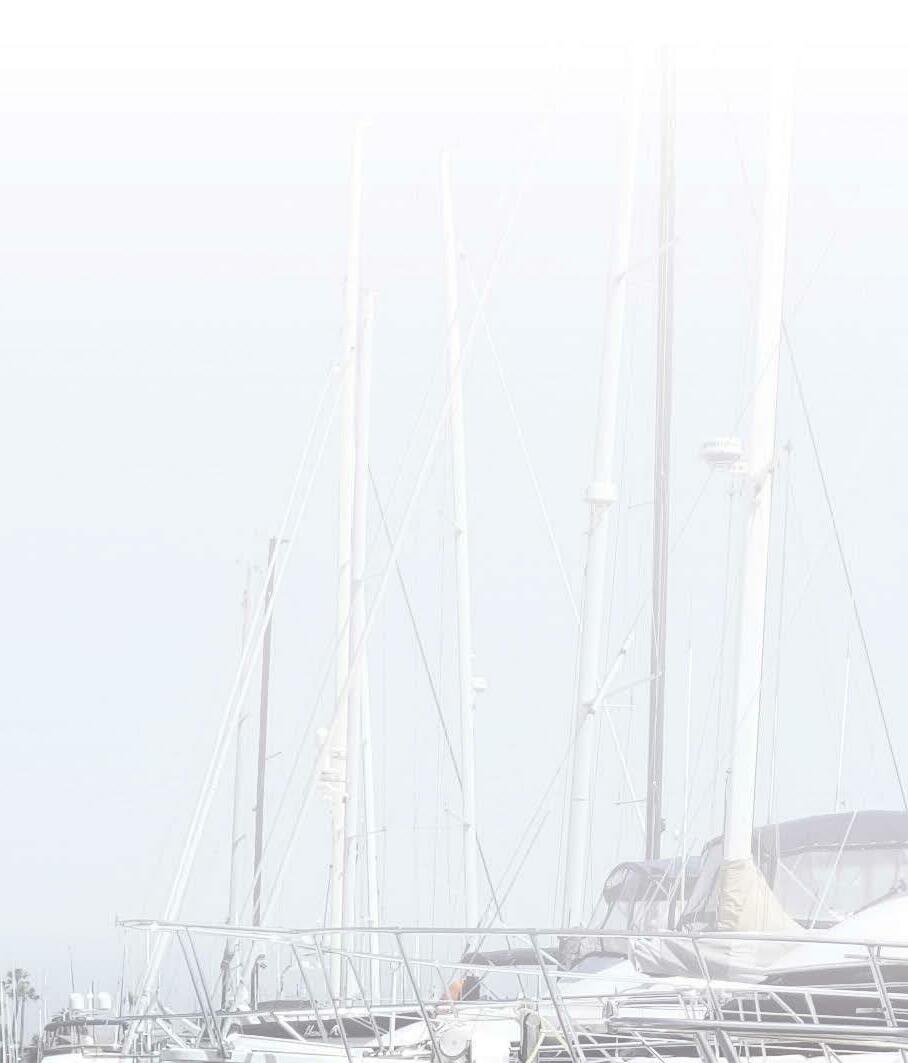



The Avalon Harbor Underwater Cleanup, one of the most popular scuba events in the state, will return for its 41st year, where more than 700 bodies will scuba in the harbor to collect an average of 3,000 pounds of debris.
By: KATHERINE M. CLEMENTS

AV ALON — On Feb. 25 from 7 a.m.- 3 p.m., Catalina Divers Supply will host the 41st Annual Avalon Harbor Underwater Cleanup, where more than 600 divers and about 100 volunteers will head out to Avalon harbor to groom the seafloor. Volunteers do not need to be Scuba certified; divers are encouraged to bring a mesh bag to collect trash. This is the one time a year when scuba diving is allowed in the harbor, and it is held on a day with minimal traffic, and for the time that the divers are in the water, there are surface monitors in place to ensure there are no issues as well as individuals in kayaks.
For many years the cleanup was hosted and organized by USC’s Wrigley Institute for Environmental Studies. This year that torch has been passed to Catalina Divers Supply and the Avalon Rotary Foundation. The event is one of the most popular scuba events in California. In addition to removing trash and debris, the day-long event will raise funds for the USC Catalina Hyperbaric Chamber and improvements at the Casino Dive Park.
Over the last 41 years, dozens of tons of trash have been removed from the marine environment, averaging about 3,000 pounds of debris being cleaned out each year.

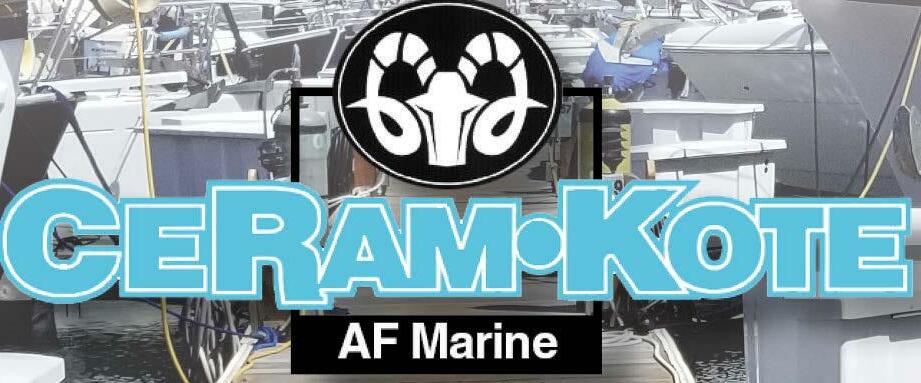
“ The Avalon Harbor Underwater Cleanup has done so much to improve the environment and bring divers together,” said Christy Lins, the owner of Catalina Divers Supply, in a press release from Jan. 3. “We knew we had to step up rath-
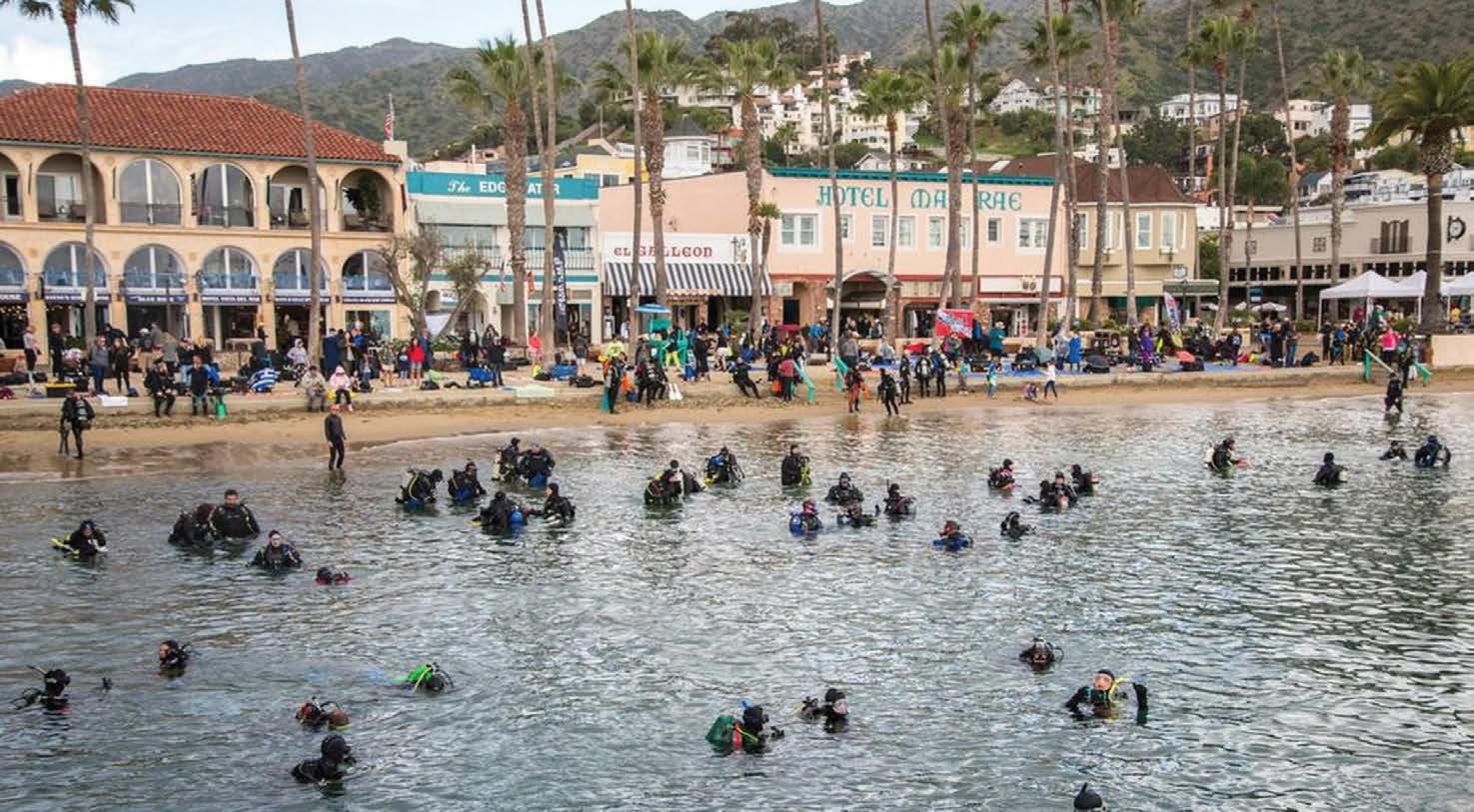
er than see the event slip away after 40 years.”








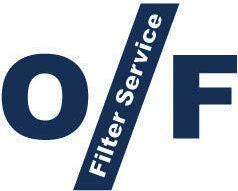
This year’s event will have a similar format to years past. Divers will enter the water starting at 9 a.m. to remove trash and debris. Divers will need to be out of the water by 11 a.m., and an award ceremony and prize raffle will be held in the early afternoon, with divers receiving prizes for several categories.
“As you would expect, divers find dozens of cellphones and sunglasses along w ith carelessly discarded cans, bottles, and plastic bags,” said Lins. “But they have also found a surprising assortment of interesting items, like jewelry, toys, and old tires. Marine creatures such as octopus, crabs, and urchins are regularly found entwined with the debris. All t he marine life is carefully returned to the ocean.”
In addition to removing trash from the marine environment, the Avalon Harbor Underwater Cleanup has become an essential source of funds for the USC Catalina Hyperbaric Chamber. Located at Two Harbors, the chamber is an important life-saving medical facility for the treatment of diving accidents. This year, funds collected will also be dedicated to the ongoing campaign for comprehensive improvements to the Casino Dive Park. Planned improvements include rebuilding the wall and installing tables and chairs.


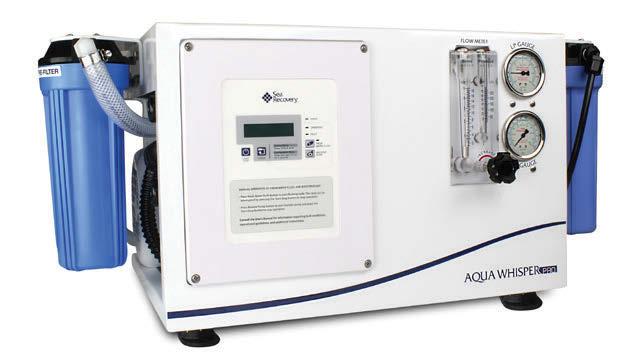

The Catalina Divers Supply is an allin-one center founded in 1960 and is one of the oldest dive shops on the West Coast, offering a full range of scuba classes, diving experiences, rentals, and repairs. Boat dives are available onboard t he Scuba Cat. Catalina Divers Supply and have been instrumental in the development and success of Casino Point D ive Park. The company was honored as a PADI Project AWARE partner for its ongoing commitment to marine conservation.
Early bird registration for scuba divers is $45, and registration for non-divers is $30. For more information, visit w ww.AvalonHarborCleanup.org. To sign up, visit https://www.signupgenius.com/ go/30e0c4aaaa82ba6fb6-41st#/.




“Our TowBoatU.S. Captain was fantastic! He consistently communicated his location, his ETA, our options for service and storage, even overnight accommodations. We never expected to run aground but we were so happy to have the TowBoatU.S. team on our side.”
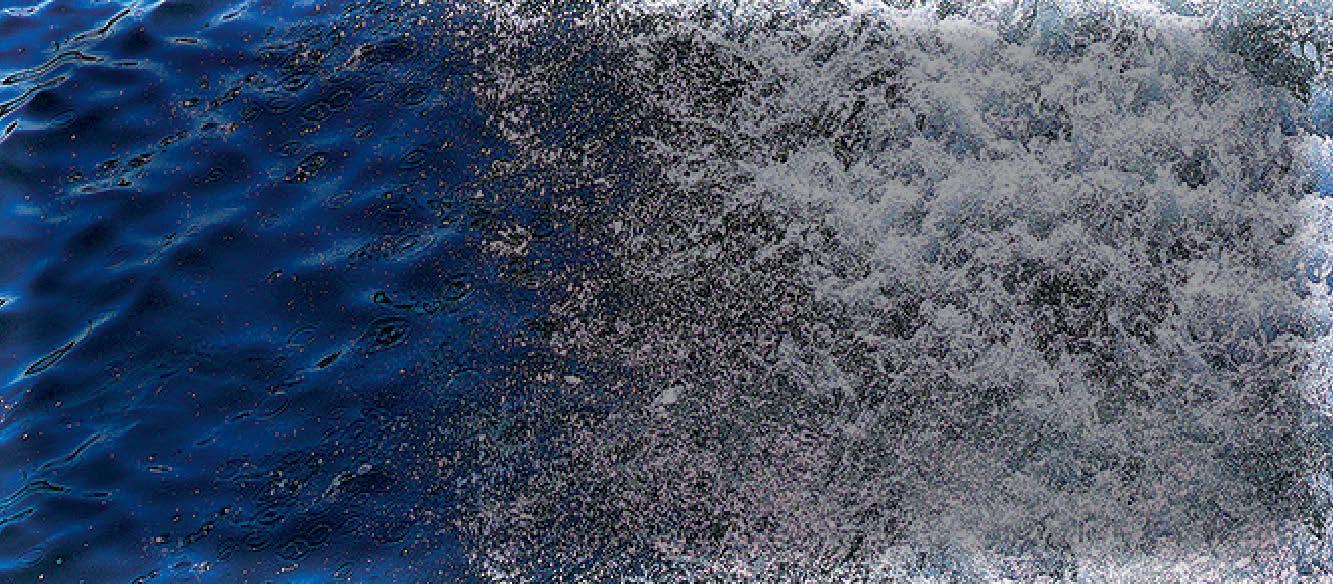
~ BoatU.S. Member, Joey Nelson

As whale migration season kick in, it’s important for anglers to do their part to reduce the number of entanglements, know and abide by the most up-to-date regulations, and know what to do if you find or cause a whale entanglement.
By: KATHERINE M. CLEMENTSGray whale migration is officially in season. Every October, the gray whales of the Pacific begin a two-to-three-month migration from the cold Alaskan seas to the warm waters of Baja, California. At nearly 14,000 miles round-trip, it is the longest annual migration of any mammal. Then, the gray whales travel to the warm lagoons of Baja, California, to mate and give birth to their calves.
For anglers, this means proper management of fishing gear and techniques to avoid entanglements and abiding by rules and regulations.
G ray whales are at high risk of becoming entangled in fishing gear. Once entangled, whales may drag and swim with attached gear for long distances or be anchored in place and unable to swim. Events such as these result in fatigue, compromised feeding ability, or severe injury, which may ultimately lead to death.
N avigating your boat improperly when encountering a whale poses a risk not only for you, your passengers, and your boat but also opens the potential to harm the whales. According to boat-ed. com, if you are on the water and you encounter a whale, it is recommended that you should:

• Avoid excessive speed or course changes within 500 yards of whales.
• Do not approach within 500 yards of North Atlantic right whales.
• Approach with extreme caution within 100 yards of any species of whales other than North Atlantic right whales.
• Approach whales from the side—not head-on—and don’t box them in.
• Don’t cut off their path or give them a reason to re-route.
• Don’t separate mothers from offspring.
• If a whale approaches within 100 feet of your vessel, put your engine in neutral. Do not re-engage your engine until the whale is observed on t he surface, outside of the 100-foot zone.
• If you see one whale, expect to see more in the immediate vicinity.
In addition, according to Matthew Burks from NOAA, “we recommend that vessels remain 100 yards from whales whenever possible.”
Another threat the whales face, which is heightened during their migration, is vessel strikes. Collisions with all sizes and types of vessels are one of the primary threats to marine mammals, particularly large whales. Gray whales are vulnerable to vessel strikes because they feed and migrate along the U.S. West Coast, which has some of the world’s heaviest vessel traffic associated with some of the largest ports in the country. Gray whales may a lso be vulnerable to vessel strikes in the inland waters of Washington and feeding areas along the Pacific coast.
If you host whale watching, it is also important to be conscious of the whale’s route and avoid any and all disturbances that may affect the whale’s behavior.
A dditionally, the California Department of Fish and Wildlife reminds both c ommercial and recreational fishers to avoid setting sport crab fishing gear in areas where whales are transiting or foraging and to follow best practices, as described in the Best Practices Guide.

A ccording to speciesunite.com, the fishing industry proposes the deadliest threats to marine giants because of entanglement in fishing gear and “ghost nets,” which is fishing equipment lost or abandoned in the ocean. The International Whaling Commission identifies entangle-
Calves are typically born dark gray and lighten as they age to brownish-gray or light gray. All gray whales are mottled with lighter patches. They have barnacles and whale lice (i.e., cyamids) on their bodies, with higher concentrations found on the head and tail.
ments as the main human-caused threat to large whales, estimating that worldwide, 3 00,000 whales, dolphins, and porpoises die from entanglements each year.
According to NOAA, if you happen upon an entangled whale, you should:
• Prompt reporting is the best way to help entangled whales. Please stay with the whale if it is safe to do so.
• Safety First! Because distressed whales may act unpredictably, they do not closely approach the animal. Never at tempt disentanglement or remove any gear without training and authorization.
• Video or photos showing the entangling gear can be helpful for our efforts to reduce these entanglements in the future. Please collect and provide video or pictures to NOAA Fisheries but remember to stay at least 100 yards from the whale and beware that lines in the water could snag your vessel.

Gray whales frequently travel alone or
in small, mostly unstable groups. However, large aggregations may be seen in f eeding and breeding grounds. These large whales can grow to about 49 feet long and weigh approximately 90,000 pounds. Females are slightly larger than males.

 By: KATHERINE M. CLEMENTS
By: KATHERINE M. CLEMENTS
Whether you want to impress your friends with some fun facts about fishing or learn some interesting info yourself, take this quiz to learn fun facts about the fishing world—no cheating!
1. Which type of fish is known for speeds up to 50 mph?
A. Bass B. Wahoo C. Giant Grouper D. Catfish 2. Why are dorado fish also referred to as dolphinfish?
Wahoos are among the fastest pelagic species, reaching up to 50 mph—almost the speed limit on most Southern California highways. As a result, Wahoos can capture a wide range of prey, including fish and squid.
3. Correct Answer: D
The largest Bluefin tuna ever caught weighed 1,496 pounds. The fish was caught in 1979 by Ken Fraser off the coast of Nova Scotia.
4. Correct Answer: C
If you want your lure to stand out in murky green waters, use a chartreuse or lime-green-colored lure. Green water has a harsh effect on red lures and can make them look black, which is hard for the fish to spot.
5. Correct Answer: A
A

location in front of the Ritz Carlton and Marina City Club.

Which export is rumored to be bad luck onboard? A. Bananas B. Alcohol C. Tea D. Explosives Shutterstock Image
• Along the iconic Marina City Club tower condominiums and the Ritz Carlton, our renovated concrete docks are walking distance to dozens of restaurants. • Slip fees include power, water, electronic access, a large storage dockbox, and access to renovated restrooms with showers. Features include free covered parking for boaters & guests, dock carts, laundry facilities, and a marketplace on site. Storage units for rent. Become a member of Marina City Club for pools, Jacuzzi, tennis courts, fitness center, and more. • Liveaboard
5. www.BoatLenderUSA.com Office: (619) 224-4466 Cell: (619) 823-5220

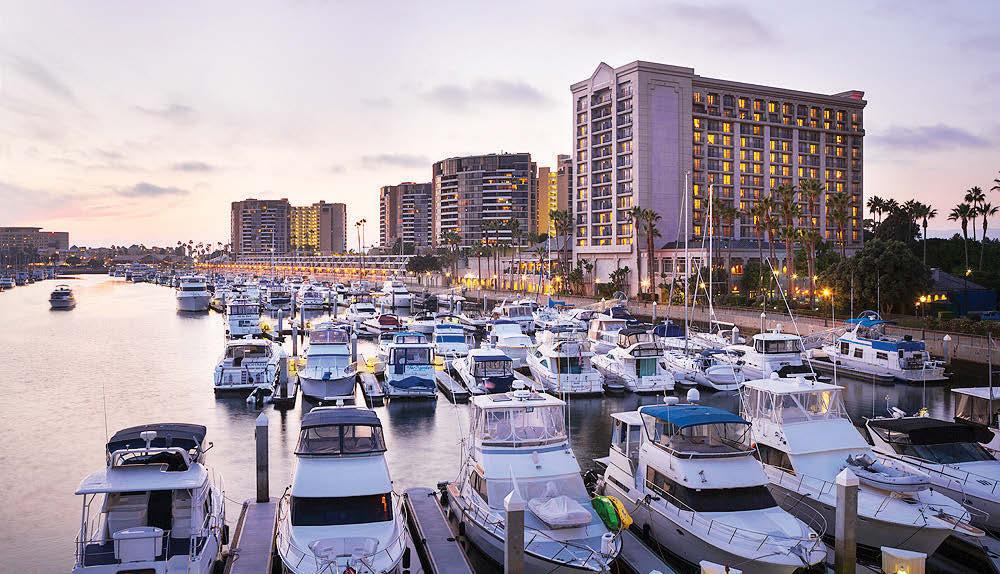

No bananas on board. This superstition comes with lots of explanations. First, bananas are a favored hiding spot for snakes and spiders and their nasty biting habits. Centuries ago, ships transported bananas from tropical islands. These unwanted spider guests would often hitch a ride in the cargo unbeknownst to sailors until they found them the hard way. Second, bananas were also believed to be unlucky. Sailors thought they would cause the ship to get lost. Third, fishing vessels believed that having bananas on board meant they wouldn’t catch any fish. This myth was created because the vessels that transported bananas had to travel quickly so the bananas wouldn’t spoil. Because the boat was moving so fast, the fishermen attempting to fish by trolling rarely caught anything. Lastly, if a ship sunk, only the bananas were found floating, making sad and salty seamen blame the fruit for sinking the ship.
So, how did you do?
3. What is the weight of the largest recorded Bluefin tuna ever caught? A. 744 lbs. B. 956 lbs. C. 1,132 lbs. D. 1,496 lbs. 4. What is the best color of lure to use when fishing in green water conditions? A. White or pearl B. Orange or white C. Chartreuse or lime green D. Red or dark blue Essex Marina City Club Call Joni Today! (619) 224-4466
SAN DIEGO — As the new leaseholder of the former Eichenlaub Boatyard location on Shelter Island, Jeff Brown Yachts is seeking to honor the legendary San Diego yachtsman and boat builder Carl Eichenlaub with the development of The Olde Boatyard.
“It’s an honor to take on the historical boatyard that Carl Eichenlaub ran since the 1950s. We are proud to be the new caretakers of this iconic yard and carry on Carl’s tradition of excellence and innovation. We plan to attract other like-minded bespoke, high-quality craftsmen in the
marine industry,” stated Jeff Brown. “The yard is adjacent to our current sales docks at Ketch Grill and Taps and provides us the chance to enhance our own serviceability and department here on Shelter Island.”
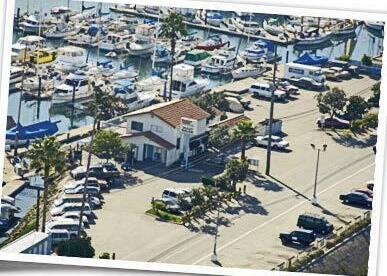
Often referred to as a true renaissance man, Carl Eichenlaub built countless boats in his Shelter Island boatyard for nearly six decades. He was also the shipwright to the U.S. National Sailing Team for seven Olympic Games spanning three decades. A highly respected sailor in his own right, Eichenlaub was a world-class competitor in Sabot, Snipes, and Lightnings and had a significant influence on some of the best sailors and yacht design-
electric drives.
ers coming out of San Diego — Lowell North, Pete Bennett, Malin Burham, and Doug Peterson.
In 2000, Eichenlaub was awarded U.S. Sailing’s highest honor — the Nathanael Herreshoff Award — for his many contributions to the sport. He was also named to the Intercollegiate Sailing Hall of Fame.
The Olde Boatyard will include two phases of improvements to the street-level workspaces and dock facilities.
“Our goal is to create a welcoming and friendly environment that encourages people to observe and interact with the high-quality craftsmen we’re looking to be part of the boatyard and waterfront
experience. It’s been said of Carl that his next project was always his favorite. It’s in that spirit that we are approaching The Olde Boatyard,” said Brown.
With offices and marinas in San Diego, Newport Beach, Sausalito, Seattle, Kailua-Kona, and Wrightsville Beach, Jeff Brown Yachts offers personalized service for buyers and sellers of both power and sail. For more information and a complete list of offerings, visit JeffBrownYachts.com, or call 619/222-9899. Exclusive regional Dealer for Axopar, BRABUS, Pardo Yachts, Pearl Yachts, Seven Seas Speedster, Sirena Yachts, and YYachts.
Mercury has unveiled its latest electric outboard motor for small boats, the Mercury Avator 7.5e. The unit is an allin-one propulsion package that includes the motor, battery, and electronics in a self-contained system. It is developed for small watercraft that accept transom-mount outboards.
The Avator 7.5e delivers on Mercury Marine’s recent pledge to expand on electric boating.
As Mercury Marine’s president Chris Drees explained, the company’s extensive history in the marine industry was key in facilitating its expansion into
“We are excited to formally introduce the Avator 7.5e electric outboard to the world,” said Drees in a statement. “As the innovation leader in the marine industry, both in internal combustion products and now electric propulsion, we have the resources and knowledge to make boating more accessible to more people while building on our commitment to sustainability. The Avator program is helping us do this in new and exciting ways.”
The Avator 7.5e isn’t necessarily a robust system, with just a 750W continuous-rated motor. That’s equivalent to one horsepower, though the electric drive means that the higher torque
system can do more with less power. Nevertheless, mercury says the motor performs similarly to a Mercury 3.5hp FourStroke outboard with comparable speed and acceleration figures.
Part of the reason the motor competes so well against more powerful gas engines is that it uses a transverse flux electric motor. That design has a different copper coil winding design that increases low-speed torque and efficiency.
The system is easy to install, turning a boat into an electric one in just a few minutes. For more information, please visit https://www.mercurymarine.com/ en/us/.
The California Department of Fish and Wildlife (CDFW) announced the selection of 25 projects that will receive funding for the restoration, enhancement, and protection of anadromous salmonid habitat in California watersheds.
The grants totaled $11 million and were awarded through CDFW’s Fisheries Restoration Grant Program (FRGP). FRGP was first established in 1981 and since 2000 has included funding from the National Oceanic and Atmospheric Administration’s (NOAA) Pacific Coastal Salmon Recovery Fund, established by Congress to reverse the declines of Pacific salmon and steelhead throughout
California, Oregon, Washington, Idaho, and Alaska.
“As California continually feels the effects of climate change, rising sea levels, prolonged drought, more extreme temperatures, and extreme precipitation events, restoring degraded river ecosystems is more important than ever before,” CDFW Director Charlton H. Bonham said in a press release. “These FRGP-funded projects will help restore the refugia salmonids need.”

In response to the 2022 Fisheries Habitat Restoration Grant Solicitation, CDFW received 50 proposals requesting more than $38 million in funding. As a competitive grant program, proposals underwent a rigorous technical review process that included CDFW and NOAA scientists.
The 25 approved projects will further the objectives of state and federal fisheries recovery plans, including removing barriers to fish migration, restoring riparian habitat, recovering wildfire impacts detrimental to rivers, and creating a more resilient and sustainably managed water resources system (e.g., water supply, water quality, and habitat) that can better withstand drought conditions. In addition, these projects further the goals of California’s Water Action Plan and CDFW’s State Wildlife Action Plan and address limiting factors specified in state and federal recovery plans.
The list of approved projects is available on the FRGP website.






AVALON — The 42nd Annual Avalon Benefit 50k/50 Mile Run took place on Jan. 7, but it didn’t go as planned. Due to heavy storms, event organizers promptly adjusted the race and had to route a new course.
“Part of creating the best experience for our runners is being flexible and adaptable, understanding that Mother Nature sometimes has other plans,” said Mike Bone, President, and CEO of Spectrum Sports Management, in a statement.

Bone continued, “I’m proud of how quickly our team was able to update our courses in the final days leading up to the event. It allowed our runners to enjoy the beauty of the island while making their safety a priority.”
The event’s 42nd annual trek was the first chance in 2023 for participants to begin earning the Catalina Island Triple Crown belt buckle. This prize is awarded to those who complete all three Hi-Tec Run Catalina events within 12 months.
Shelby Farrell and Paul Sinclair crossed the finish line as the victors in the 50-mile event. Caitlin Healey and Cory Mayfield won the 50K. The 50K race joined the party five years ago and instantly became a California classic in trail running traversing all the same trails the older run uses.
The Avalon Benefit 50 Mile / 50K Run raises funds on behalf of the Avalon Lions Club to support its charitable work and community assistance throughout Catalina Island. The Avalon Lions provide annual scholarships to all graduating high school seniors who want to continue their education, help families with medical expenses, and help build and restore parks
and playgrounds around the island. The club also helps maintain the island’s natural environment through the support of the Catalina Island Conservancy.
The Hi-Tec Run Catalina series also includes the Catalina Island Marathon on March 11 and the Catalina Island Half Marathon on November 11. Participants

looking to earn the Catalina Island Triple Crown belt buckle must register and complete all three events.


For more information, please visit https://www. catalinaislandmarathon. com/.



The Avalon Benefit, 50 Mile/50K Run, is California’s oldest ultra-trail run. It was originally just the 50-mile run. The 50K joined the event in 2018 and instantly became a California classic in trail running

DANA POINT — Mark your calendars.
From Jan. 21-22, King Tides will take over Dana Point. King Tides occur twice in the Earth’s rotation when the Earth is closest to the moon and closest to the sun and typically last for three to four days. This occurs around the winter and summer solstice. Winter king tides may be amplified by weather and ocean conditions making these events more dramatic. In the northern hemisphere, the term king tide is used to describe each of these winter high tide events.

The gravitational pull between the sun or moon and the Earth is what causes king tides, a non-scientific name often used to describe exceptionally high tides that can reach as high as seven feet tall.
When the tides are high, it makes for great surf, and the waves are a phenomenon worth watching. When the tides are low, it opens an exploration of tide pools where you can find creatures like urchins, sea cucumbers, nudibranchs, and octopuses.
Tides are long-period waves that roll around the planet as the ocean is “pulled” back and forth by the moon and the sun’s gravitational pull as these bodies interact with the Earth in their
monthly and yearly orbits. Higher than normal tides typically occur during a new or full moon and when the moon is at its perigee or during specific seasons around the country.
The Ocean Institute in Dana Point offers educational walking tours where guests can learn, see, and experience the dramatic bi-annual waves.
Dana Point Harbor Partners and the American Red Cross are hosting a blood drive on Jan. 26 from 10 a.m.- 4 p.m. at the Dana Point Harbor. Participants can join in the Red Cross’s mission by scheduling an appointment at RedCrossBlood. org. Streamline your donation experience and save up to time by visiting RedCrossBlood.org/RapidPass to complete your pre-donation reading and health history questions on the day of your appointment.
When you start sailing, there are a ton of topics to learn. When it comes to sailing, learning never really ends. But so many will skip over some topics because it’s too complicated and there is too much to learn.
W hat is tacking? Tacking means moving the bow of the boat through the wind. Right or left does not matter. That is the most undiluted definition of tacking. While it may sound simple, the definition is about the only simple thing regarding tacking.
Moving one’s bow across the wind becomes much more complicated when you learn the commands for proper tacking and then the physics of the maneuver. And it is in these details that most new sailors genuinely mess it up.
Picture a chalkboard with an arrow pointing downward from the top of the board. The arrow represents the “wind.” Next, draw a circle beginning at that arrow and go all the way, 360 degrees, either direction, around and back to the top. That is the sailing clock. And roughly from midnight (where the wind is) to about ten and two on either side is upwind sailing, and you can’t sail in those directions. That is called “the luffing arc,” and boats can’t sail in that direction by the rules of physics.
If you want to go that direction (i.e., directly upwind towards midnight on the sailing clock), you have to zig-zag your way as close to the wind as possible, which is the tacking maneuver. Going f rom 45 degrees off the wind on one side (i.e., 2 o’clock), turning your boat through midnight on the clock, and going 45 de-
grees to the other side beyond 10 o’clock.
V isualizing this is half the work of tacking your boat, so let’s add the commands.

Let’s say you’re sailing your boat with your sails hauled in or “close hauled” on a starboard tack (right side facing the bow). That is another definition for the word tack. This a way to describe the state of your sails, but don’t focus on that right now because this article is about the action of tacking.
You want to turn your boat 90 degrees and start sailing on the other side of the sailing clock; let’s say you are at 3 o’clock and want to go to the 9 o’clock position. To accomplish that, your boat must have enough inactivity to sail directly up into the wind while maintaining forward progress and turning through to the other side. In addition, to have enough inertia to complete a tack, your boat must have enough speed at the start of the maneuver. With practice and experience, you will begin to recognize how much speed you need to complete a tack of your boat.
Next, there are some commands you need to know. Again, communication on the boat is crucial. You will not turn your boat willy-nilly when you have a 40’ tartan with a genoa jib the size of your backyard to hurl across the deck. This requires cooperation from the crew, and commands will keep everyone working in unison.
The first command comes from the helm. They shout, “ready about.” That means everyone prepares the boat to turn 90 degrees through the wind. The
pit crew has the most work to do as they must load up the lazy jib sheet and prepare to release the working jib sheet. The foredeck should be cleared of open hatches, errant fenders, or anything else you might have garnishing your foredeck that might catch a flying jib sheet.
Additionally, down in the cabin, if there is any strong wind blowing, everything that is not stowed correctly will come down on the crewmembers. So let them know your plans too. Then, when everybody is ready, they inform the helm by smartly barking “ready.”
Next, the helm declares that they are beginning to tack by saying, “Hard-ALee.” There are a couple of variations on this command; if you want to say something else, it’s your boat. Just make sure everyone onboard understands what you are commanding. The helm then takes the tiller and swings it to the leeward side or away from the wind. This will begin to
turn your boat towards the wind.
To remember how to turn the helm, remember the phrase “tiller towards the sail when tacking.” You won’t have any confusion about what happens next because it’s theatrical.
A s the bow of the boat swings toward the wind, the sails will come to life, fluttering (also called luffing). If your pit c rew is in tune, the second the jib collapses into a fit, they will be ready to release the jib on one side and pull it in on the other. The helm will turn the boat 90 degrees, and once the desired course is achieved, they will center the rudder and allow everyone to catch up. When you are happy with the boat’s direction, celebrate by telling the pit crew to “trim to course.” If everything works, you will have completed your first tack.
By: KATHERINE M. CLEMENTSOn Feb. 4, the Coronado Yacht Club will be one of three yacht clubs to host the South Bay Clubs Regatta along with Coronado Cays Yacht Club and the Navy
Yacht Club San Diego. The regatta will be governed by the rules as defined in the Racing Rules of Sailing and is open to all members of Yacht Clubs and Sailing Associations recognized by US Sailing. Only members of one of the South Bay Yacht Clubs (Coronado YC, Coronado Cays YC, or Navy YC San Diego) can qualify for the championship regatta. Entries are limited to single-hulled boats 20 feet or more in length overall. Eligible boats may enter by registering on Regatta Network and must be submitted by 5 p.m. the day before the regatta. Late entries will not be accepted. Fees for each race are determined by the hosting regatta (no more than $30). This regatta is a Sailors for the Sea “Clean Regatta.” As such, all competitors are encouraged to use non-singleuse water bottles and recycle all appro -
priate items. Competitors are reminded of RRS 47, which states that competitors “shall not intentionally put trash i n the water.” For more information, please read the Notice of Race at https:// www.regattanetwork.com/clubmgmt/ regatta_uploads/23834/NORSouthBayClubsRegatta.pdf or visit https:// w ww.regattanetwork.com/html/calendar.php.
From Feb. 4-5, Dana Point Yacht Club, Newport Harbor Yacht Club, Silver Gate Yacht Club, and Balboa Yacht C lub will host the 93rd Annual SCYA Midwinter Regatta hosted by SCYA member clubs from Morro Bay to Baja Mexico. The race is open to PHRF Spinnaker classes and RS Tera classes. Par-
ent/Guardian and emergency information is required for minors registering for the RS Tera Class. Minor Waiver & Release Form must also be completed and submitted at check-in for all registrants under the age of 18. For those wanting to charter an RS Tera for the regatta, a separate charter fee of $25, payable to DPHYF, will be due at check-in. C harter boats are on a first come/first serve basis. No Notice of Race is available currently. For further details and information about DPYC, please email race@dpyc.org. For Newport Harbor Yacht Club, please email ray.jacobi@nhycstaff.org. For Silver Gate Yacht C lub, please contact manager@sgyc. org, and for Balboa Yacht Club, please email sailing@balboayachtclub.com.
Ahoy Sailors, hopefully by now, you’ve made your New Year resolutions that will help boost your boating experiences throughout 2023. Before you get on the water, please go through this checklist to ensure that your boat and equipment are in pristine condition, keeping you safe and prepared as we enter a more active boating season. Then, stay tuned for your next lesson, when we discuss the basics of boat warranties and what you should know as an owner.
By: KATHERINE M. CLEMENTSJanuary is a period of downtime for many boaters, making it the perfect month to inspect and update boating safety equipment — especially if you h ave pulled it out of storage. Unfortunately, when equipment and devices sit for a while, they expire and fail. So here is a checklist to go through before you get back on the water.
These require replacement every three years. First, check the expiration dates on your handheld and meteor flares. If they are set to expire mid-season, add a reminder to your calendar. If they expire w ithin a month or two, it might be easier
to get it done now. For U.S. Coast Guard requirements for flares, https://www.uscgboating.org/images/420.PDF.
Check the pressure gauges on your boat’s fire extinguishers to confirm they read in the green “full” zone. If any of them appear to have been partially discharged, replace them with Coast Guard-approved fire extinguishers. Next, give your extinguishers a shake to loosen the fire-retardant powder that might have fallen to the bottom. Lastly, make sure the bracket still holds the extinguisher securely. Visit https://uscgboating.org/recreational-boaters/fire-extinguisher-faq.php for
more information on fire extinguishers.
These require re-registration every two years, as mandated by the National Oceanographic and Atmospheric Administration (NOAA), which sends a reminder. If your address or email has changed, you might not have received it, so check your EPIRB and PLBs for the re-registration date. If it is overdue, go to www. sarsat.noaa.gov to update the information. Additionally, check when you need t o replace the batteries in your EPIRBs and PLBs. Most of these devices offer a test procedure— now is the time to run that test.
Ensure fabric, straps, buckles, and flotation materials remain in good condition. If you have any doubts, toss, and r eplace them with new life jackets. If you have inflatable life jackets, remove and inspect the CO2 cartridges. If any are damaged or used, replace them with new ones.

Make sure you have a functional Coast Guard-approved sound-producing instrument on board.
It is important to replace all the batteries in your flashlights and have new extras on board. If any flashlights have rechargeable batteries, fully charge them. It’s also helpful to enter reminders on
your calendar to recharge them again in the future.
You might have to wait until spring commissioning for this, but as soon as the boat is ready, stick your head in the bilge compartment while someone presses the bilge pump switch to ensure it runs. While there, lift the float on the automatic bilge pump switch to ensure it turns on the pump. In addition, check all the wiring and connectors to verify that they are corrosion-free.
Inspect all of your anchor’s rode and ground tackle. Replace components such as the line, chain, or shackles showing excessive corrosion or wear and tear.
Make sure they work; if they don’t, you know what to do— replace them.
If you want the Coast Auxiliary or Power Squadrons to help make your boat as safe as possible, schedule a Vessel Safety Check. Volunteer members of either g roup will come to your marina or your house (for trailered boats) to conduct a VSC. If you pass, you receive a VSC decal for the year. To schedule a VSC, visit wow. uscgaux.info.
Accomplish everything on this list, and you and your boat are set for boating season.

 By: KATHERINE M. CLEMENTS
By: KATHERINE M. CLEMENTS
As kids, many of us had the incredibly annoying experience of acquiring head lice. But did you know that lice are found in the fur and feathers of almost every mammal and bird species? For humans, they live in hair or clothes. But what about animals without fur or feathers? Can naked, bald fish get lice? The answer is both yes and no. Yes, fish do get lice, but they are very different from the lice you might have had in third grade. Your childhood lice were insects, but the lice found in the ocean are not. Like crabs and lobster, oceanic lice are crustaceans. Argulus, or fish louse, is a small lobster-like animal that lodges on the skin of Cypriniformes fish, like koi or goldfish. Fish louse can be observed with the naked eye. The fish that have been infected will get red spots and will start behaving differently, like rubbing against stones and jumping above the water. Argulus can be a major threat to fish health. Heavy infestations of this parasite can cause significant morbidity and mortality.
If you happen to have a koi pond in your backyard, it is wise to put diseased fish in quarantine outside the pond to prevent a plague. It is, of course, better to prevent fish louse by inspecting newly introduced fish to find out if they have been infected. In rare cases, birds might introduce Argulus to a pond. It is therefore advised to observe fish regularly.
To improve the health of the fish, it is crucial to feed fish during the summer
months on good quality feed— feed containing many essential nutrients, vitamins, and minerals. Healthy fish can resist attacks of fish louse more easily.
According to seafoodsource.com, sea lice are not harmful to humans, but the lesions caused by even a minor infestation can make fish, such as salmon, unmarketable. Unfortunately for the industry, sea lice have been around for years and have adapted well to living on marketed fish such as salmon.
Fish can also contract tongue-eating lice. It’s what science fiction is made of: a parasite that eats and replaces the tongue of its host.—Cymothoa exigua. These parasites are isopod crustaceans as well, related to the pill bugs (or roly-polies) you can find in your yard. As an isopod, they have a segmented exoskeleton. They seem to be selective of the species of fish they parasitize for unknown reasons. To date, they have only been found in eight species of fish, including Atlantic croaker, spotted seatrout, and a few species of snapper. The louse seems not to cause any other damage to the host fish. However, once it replaces the tongue, it feeds on the host’s blood and mucus or the fish’s prey. If a fish has multiple lice, it can cause the fish to become malnourished.

If your pond or aquarium fish contract lice, there are treatment options. But if you catch one in fresh or salt water and see it, release the fish and always follow proper hand washing methods to prevent the parasite from spreading and keep yourself healthy.

The chromatics that goes into color coordination applies to fishing lures and the locations they will be used at. So, while the number of color options are dazzling, a few fish fundamentals form the foundation for choosing the right one.



Few fishermen need a sack full of color combinations to bag fish consistently. However, a general set of rules apply to most circumstances when settling on a color. Consider this: the color selection should be selected by the lure’s ability to visually stand out under varying weather and water conditions.
Here are some general guidelines for selecting the right color to match the situation:
1. Hard baits - Match the hatch:
For hard baits, only four color patterns are necessary for almost all anglers. They consist of three designs that “match the hatch” on most lakes –Crawfish, shad, and bluegill. The fourth essential pattern is some type of bright or flashy color, like chartreuse/black back or fire tiger. These are ideal for when the water’s muddy, in river systems, or whenever you’re fishing in low-light conditions
contrast, dark-colored plastics look unnatural in clear water conditions and don’t get nearly as many bites. To maximize your bites in clear water, instead, go for something natural, like green pumpkin, watermelon, or brown. These shades won’t look illsuited like a darker color, and the bass will be much more likely to snatch them up.
3. Semi-Stained Water: In mildly stained water, opt for moderately neutral colors. Believe it or not, blue, red, and orange all appear neutral in the water.
For plastics, color selection is closely linked to the water conditions. In stained or muddy water, it’s all about contrast.
4. Overcast, Dark Days: When cloudy, choose dark colors; these include black, gold, and varying shades of gray.
Shutterstock image
“Well,
@danapointharbor “
2. In clear water, go natural: Although they provide lots of
5. Bright, Clear Days: On sunny, bright days, lean toward light colors. These include white, chartreuse, chrome, and silver.




• The beginning of the 2023 fishing season through the first two weeks of January can for the most part be summed up by talking about the recent bad weather that has brought a lot of days of rain, strong wind, and high seas. There is more rain forecasted to be coming over the next few days but then the extended forecast says that there may be a break in the string of storms toward the latter part of the month. There have been some boats out fishing during the brief breaks in the weather between storms, so I do have some recent news to report.
• Prior to the string of recent storms, a lot of anglers were focused on the fishing for bluefin tuna and an assortment of rockfish that was going on out at the Tanner Bank. Boats had been finding pretty good numbers of 18-to-65-pound bluefin biting along with good numbers of rockfish. The bluefin at the Tanner Bank were biting best while fishing on the anchor in an area to the north and northeast of the high spot. Best baits were live squid, sardines, knife jigs and Flat Fall jigs.
• It has been more than 2 weeks since anyone that I know of has given it a try for bluefin at the Tanner Bank. In looking at a sea surface temperature chart I see that the water temperature out by the Tanner Bank has dropped down into the 57-to-58-degree range after the string of recent storms. This cooling of the water may well have been enough to send the bluefin away from the Tanner Bank in search of areas with warmer water. One can only speculate until someone goes out and gives it a try.
• There has not been much to report in the way of bluefin activity from other more local offshore areas with no one out looking with the recent bad weather. In looking at a sea surface temperature chart there is an area of relatively warm 60-to-61-degree water that runs from the area east of the 43 Fathom Spot on down and in to the area of the 302 Spot and this might be a zone where some bluefin might be found in the 60 to 61 degree water. The most recent reports of bluefin being caught in an area other than the Tanner Bank were where some long-range boats



were catching some large bluefin while fishing 150 to 180 miles below Point Loma.
• The other offshore fishing that had been producing occasional action before the recent bad weather was deep drop fishing for swordfish. I am thinking that someone might want to give the deep drop fishing for swordfish a try once the weather settles down in an effort to catch the first swordfish of 2023. The most recent reports of swordfish activity are now more than 2 weeks old but areas that were showing the best signs of holding swordfish prior to the recent series of storms were the 9 Mile Bank, 178 Spot, the Radar Dome at San Clemente Island, the 152 Spot off the East End of Catalina, the Avalon Bank and 3.5 to 8 miles off Newport Beach. A recent sea surface temperature chart shows an area of relatively warm 60-to-61-degree water in the region of the 178 Spot, the 9 Mile Bank, the 43 Fathom Spot, the 182 Spot, 224 Spot and 302 Spot. Those relatively “warm” water areas might be ones to try once the weather settles down.
• Some sportboats have started to run 1.5-day trips to fish the Mexican Coast off the Punta Colnett region and they have been finding good bottom fishing along with a chance at some yellowtail. The bottom fishing in the Punta Colnett region
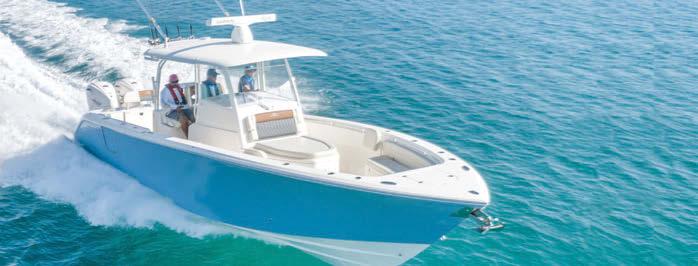



is often highlighted by catches of quality sized lingcod and reds. Pegasus out of Fisherman’s Landing fished a recent trip to the Punta Colnett region and had 17 anglers on a 1.5-day trip catch 65 reds, 46 whitefish, 20 rockfish, 15 lingcod, 1 sheephead and 22 yellowtail.
Full story will be found online. Bob Vanian is the voice, writer, and researcher of the San Diego-based internet fish report service called 976-Bite which can be found at www.976bite. com. Vanian also provides anglers with a personal fish report service over the telephone at (619) 226-8218. He always welcomes your fish reports at that same phone number or at bob976bite@aol. com.


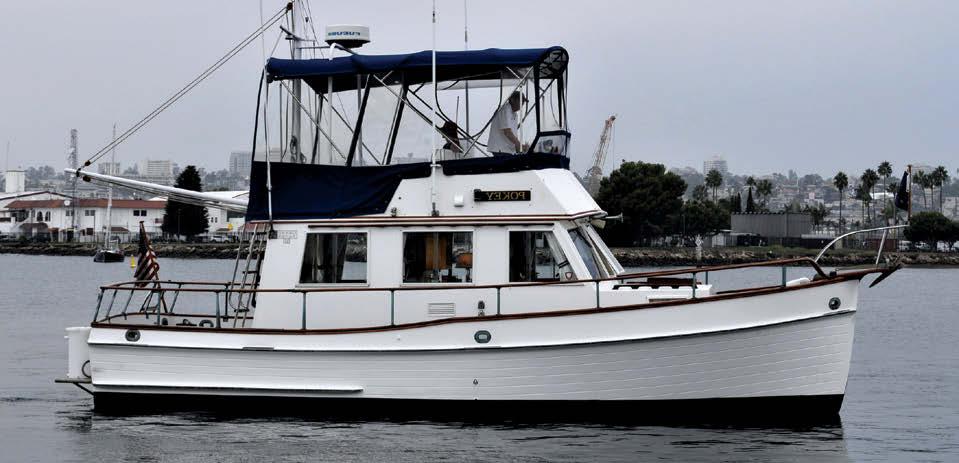

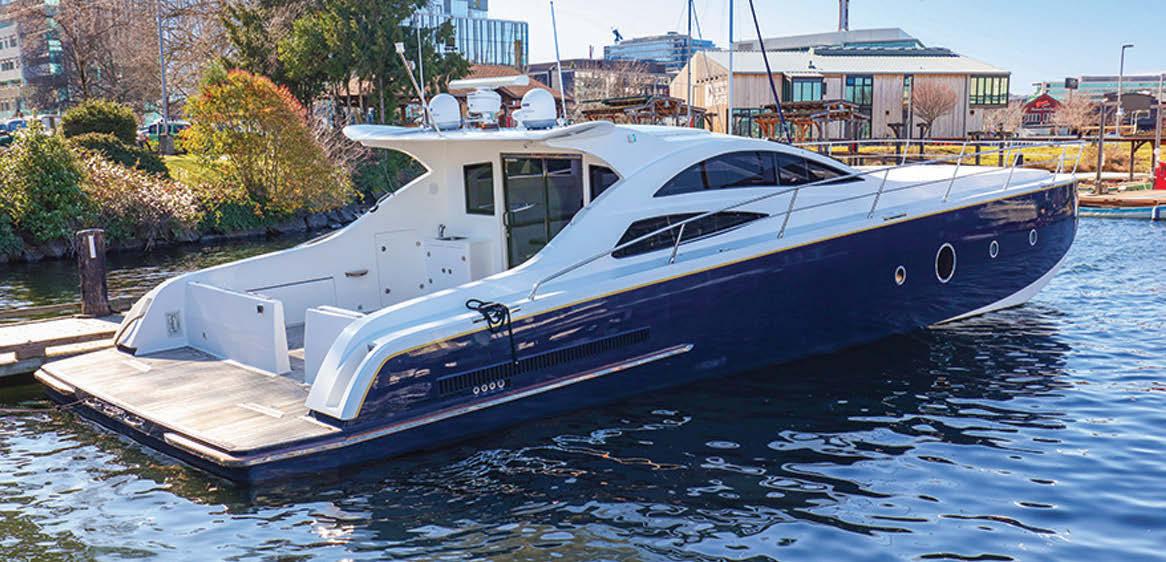


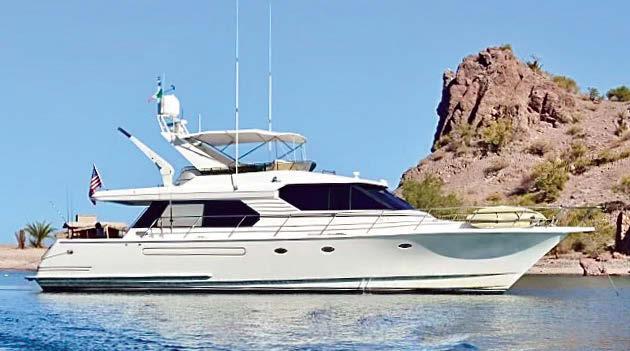

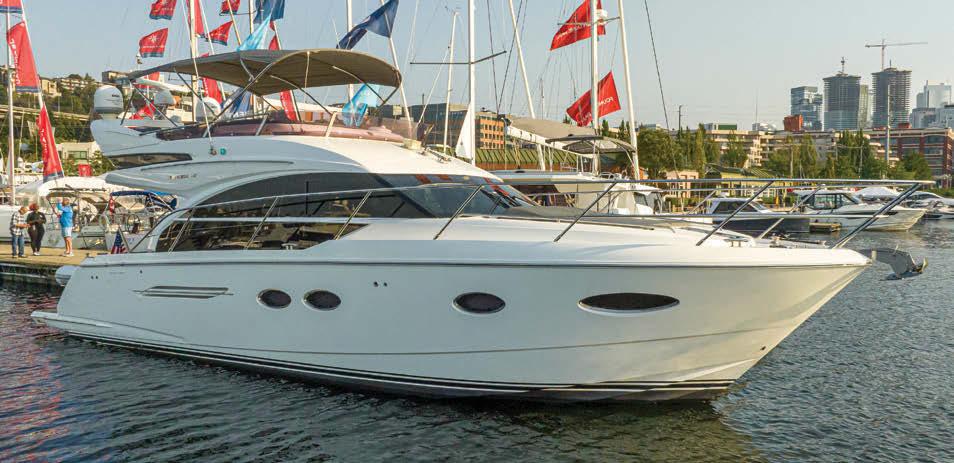























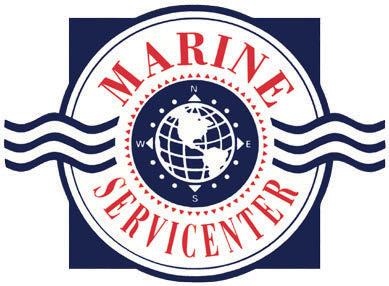





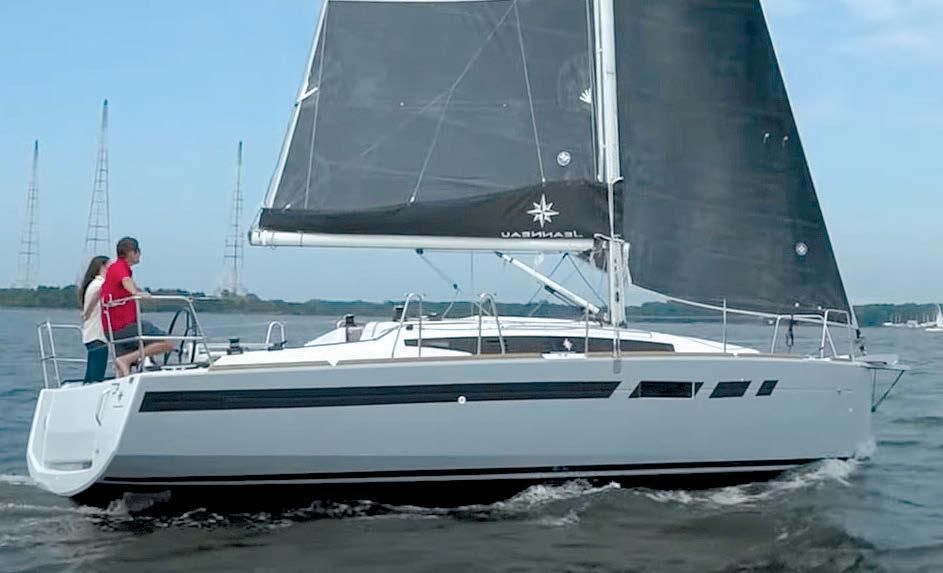











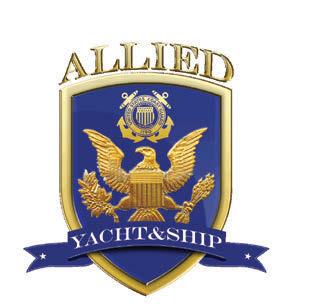
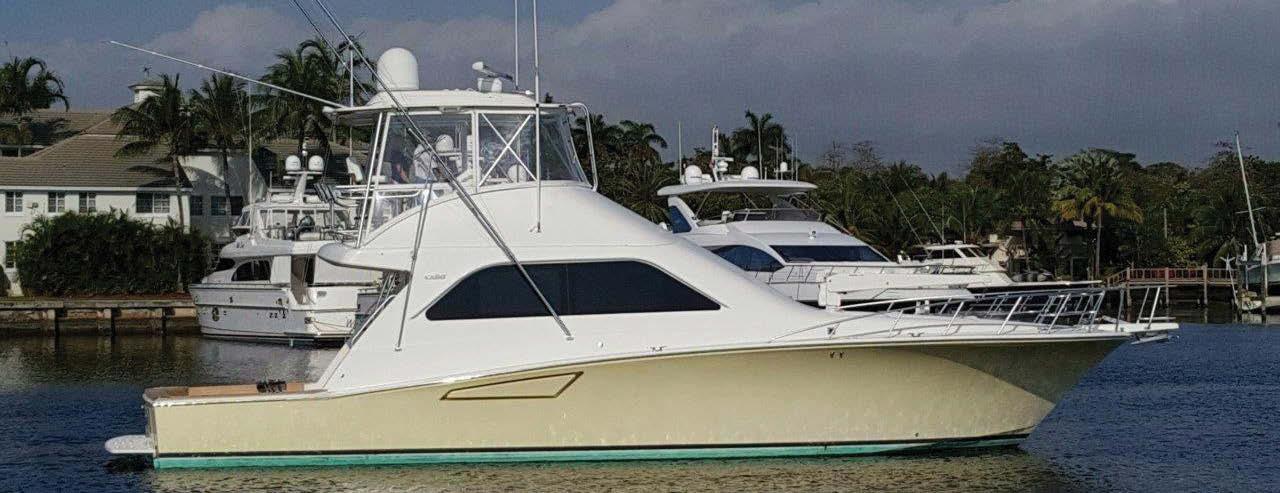




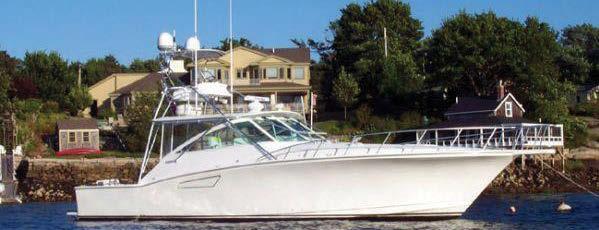





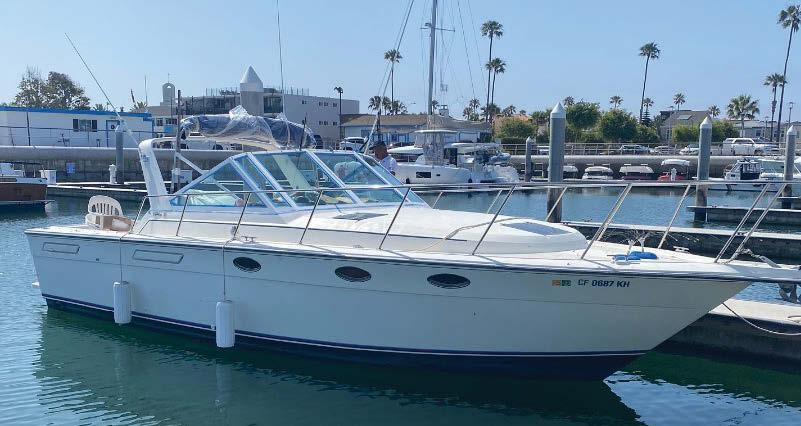

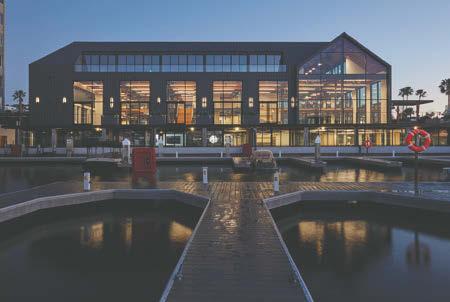



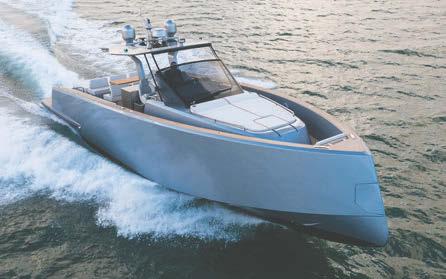

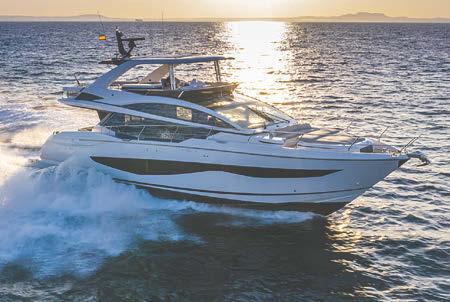





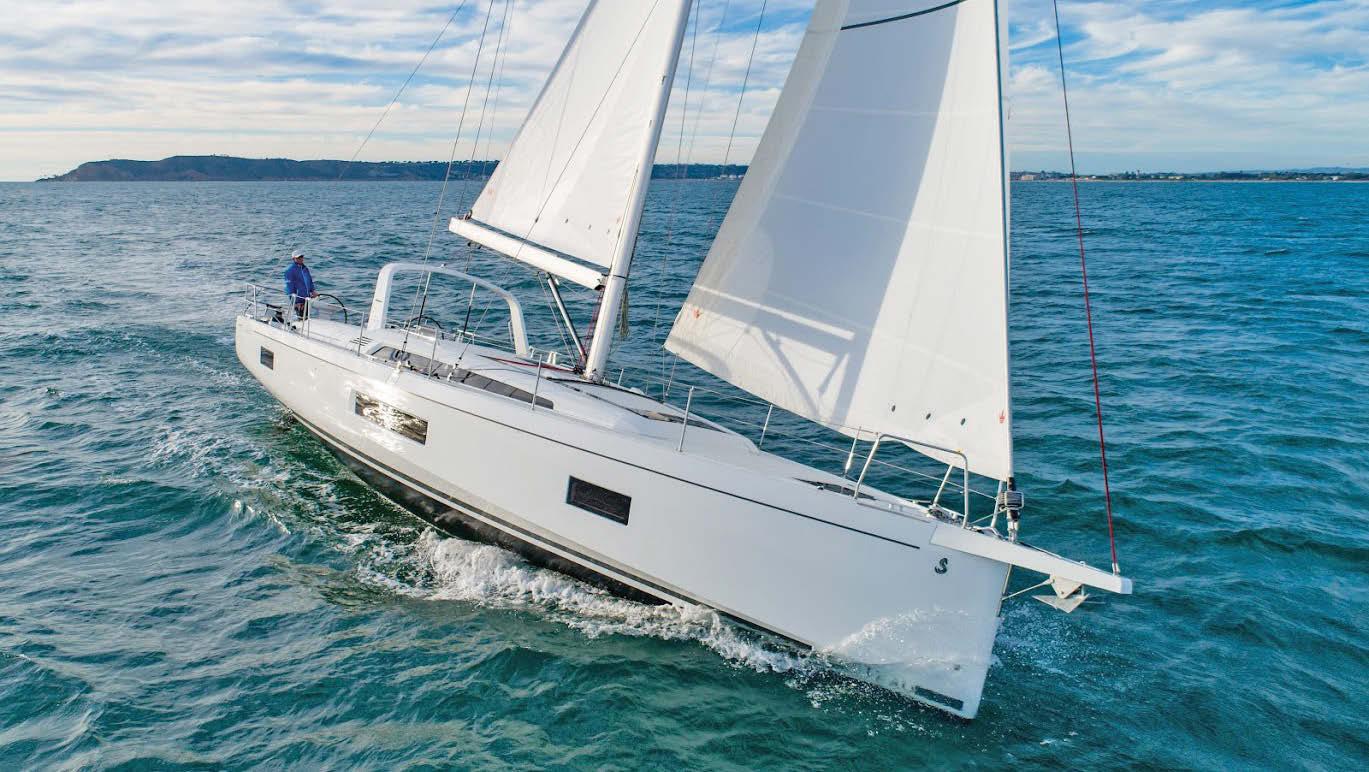

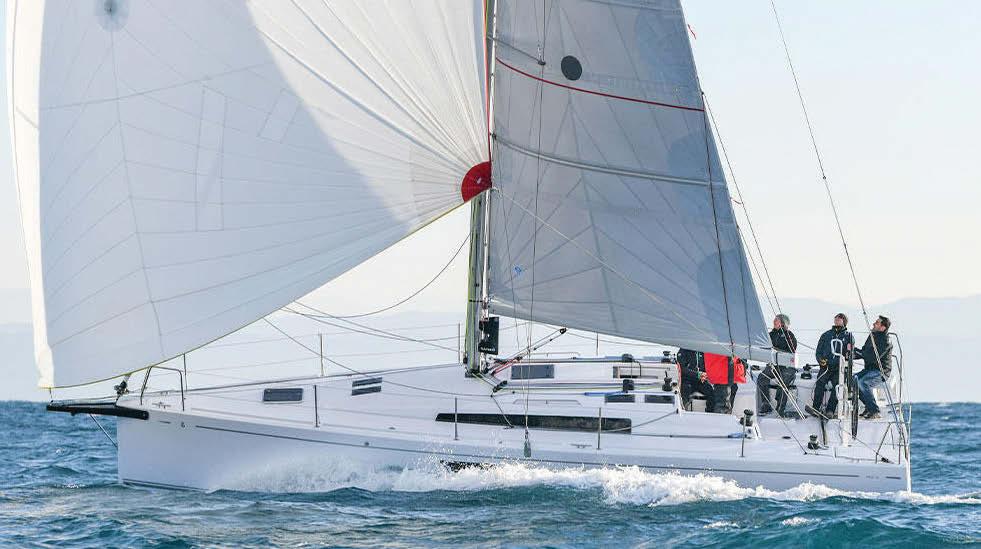


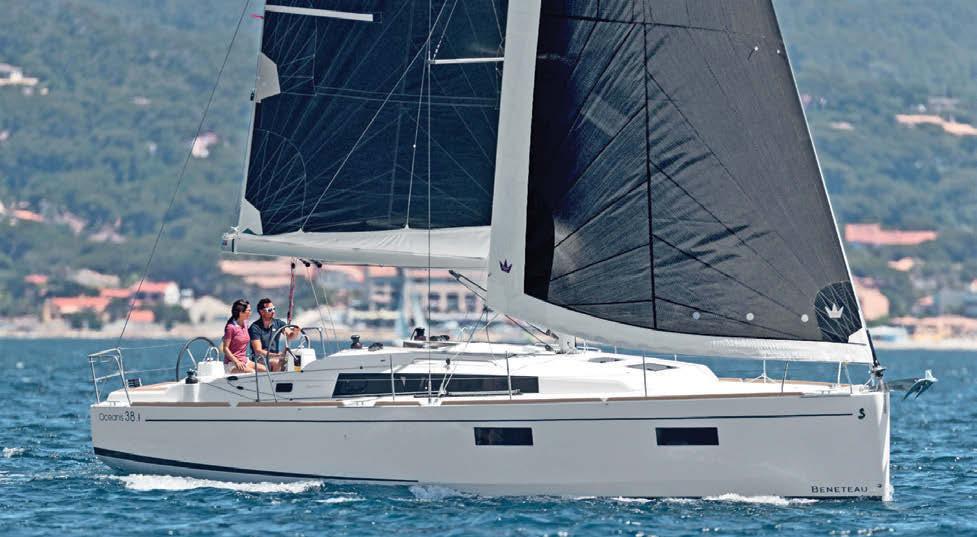
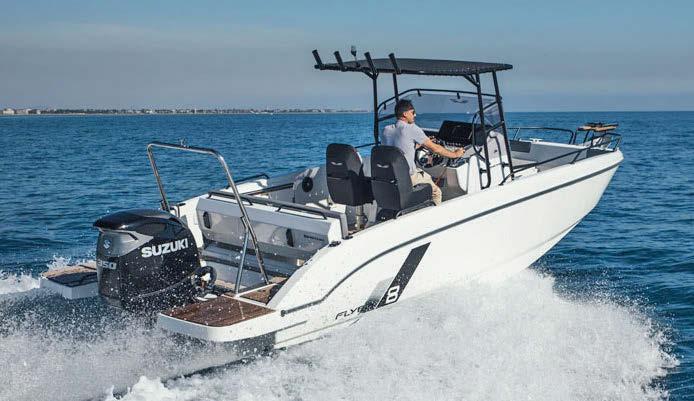
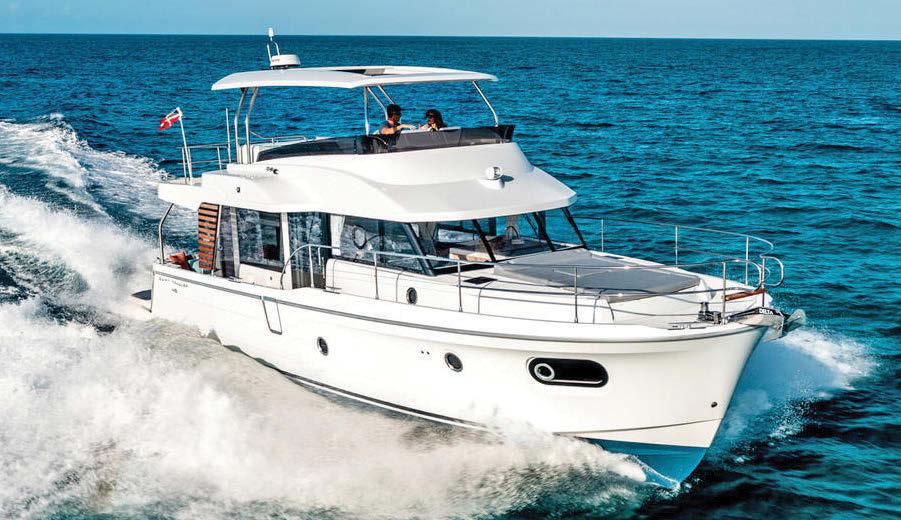

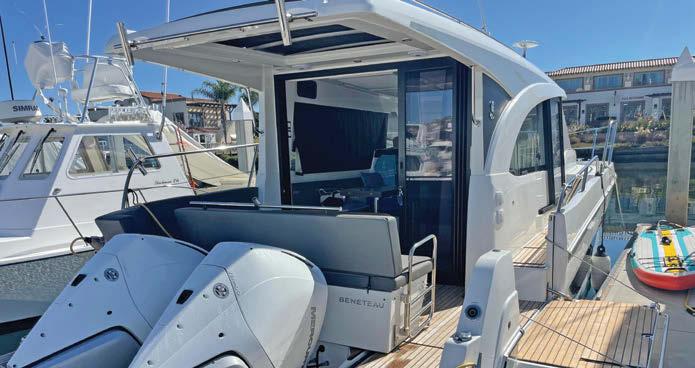
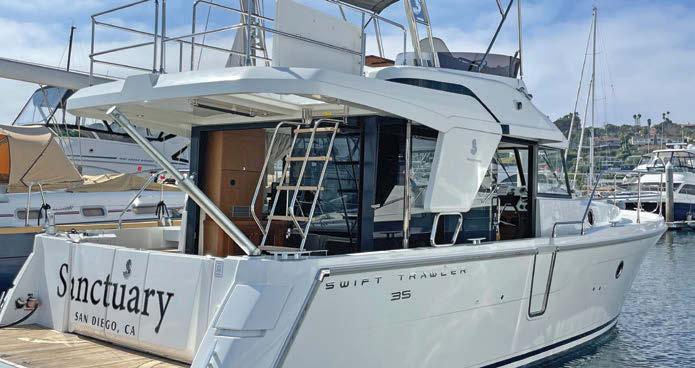

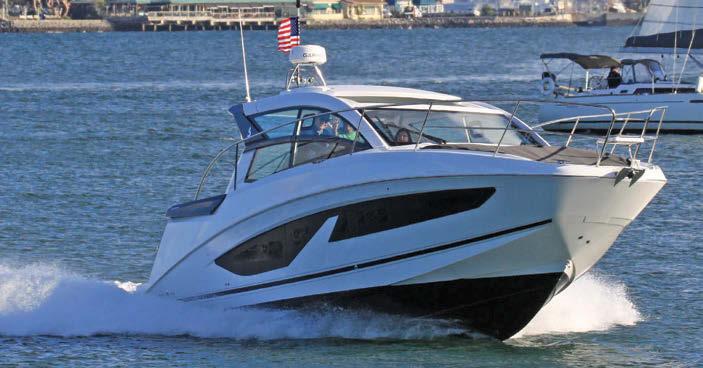
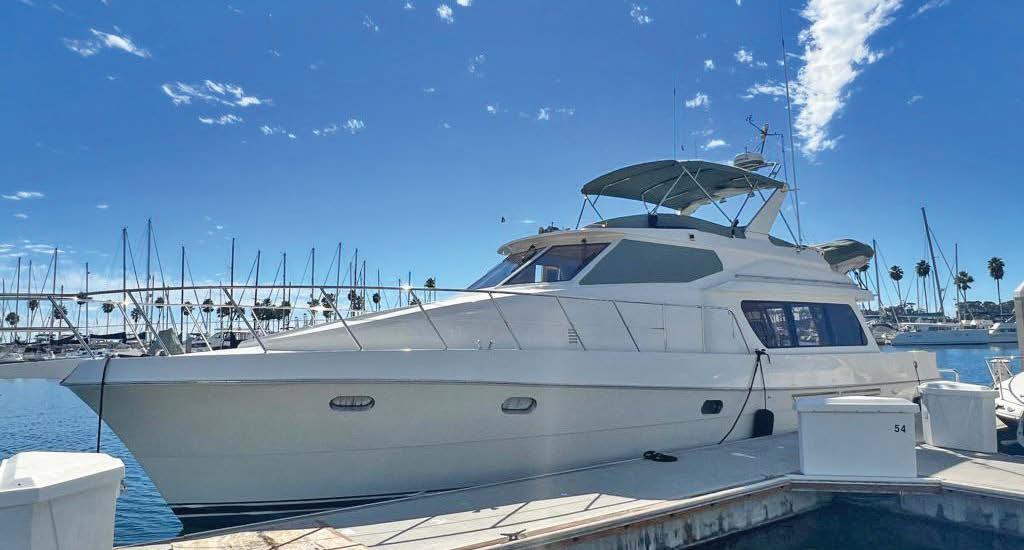


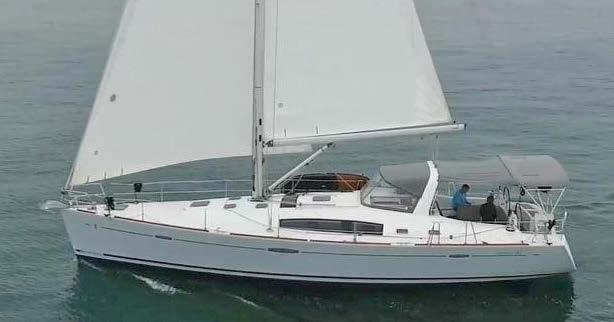



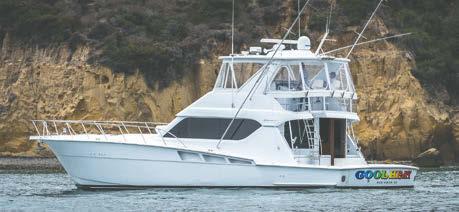



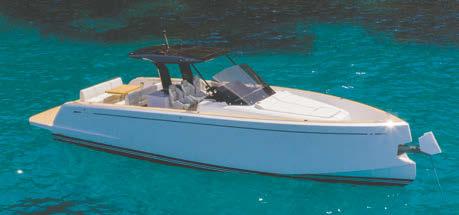



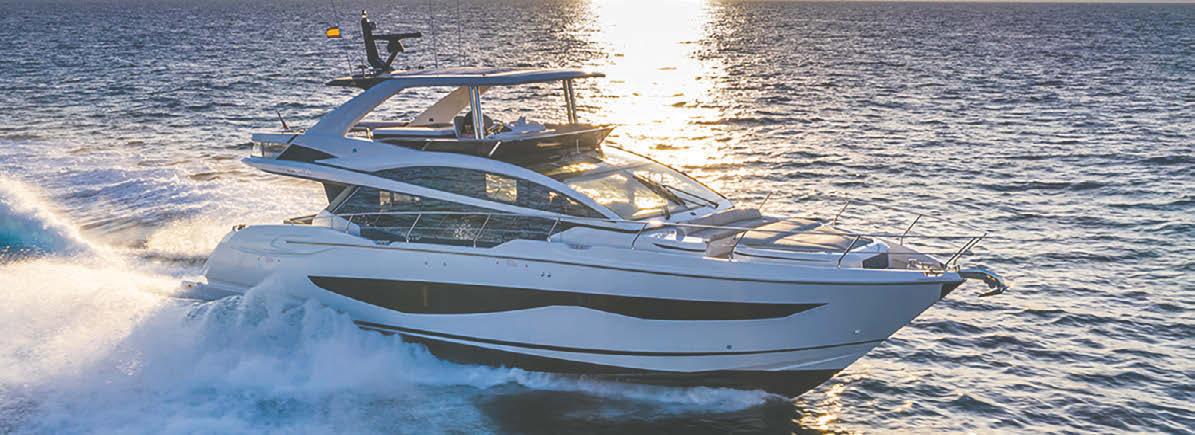
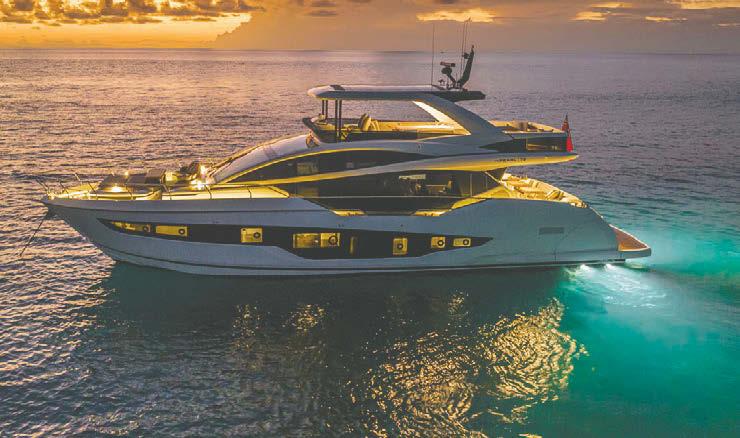


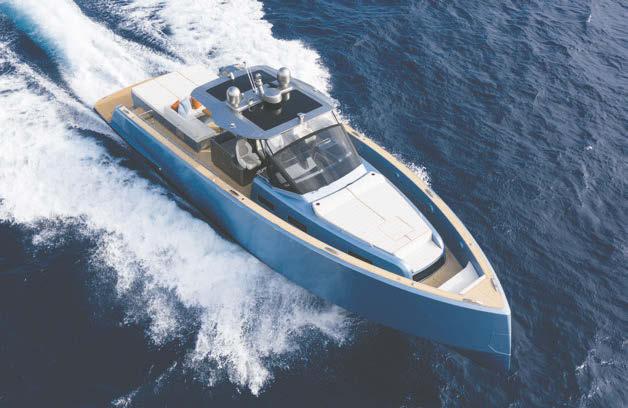





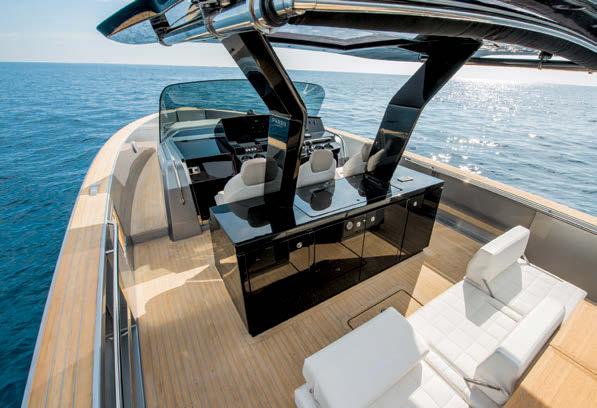



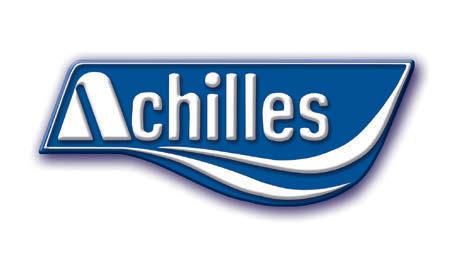







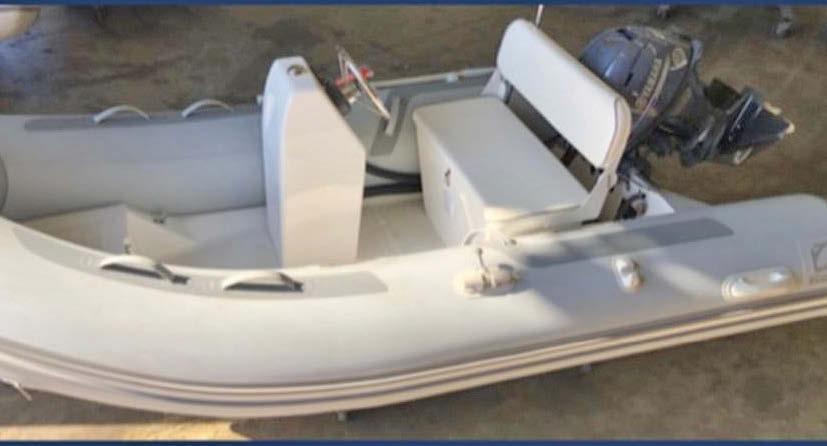



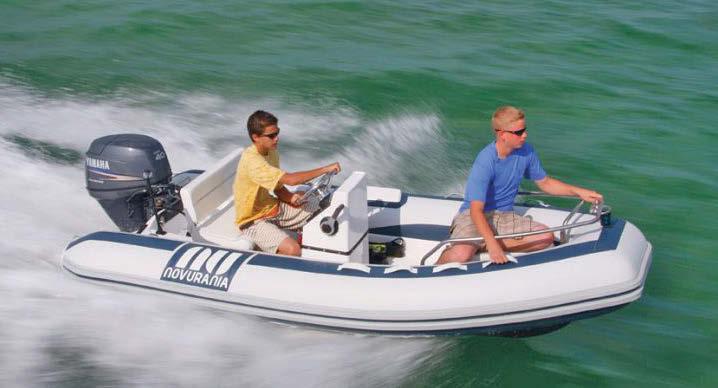



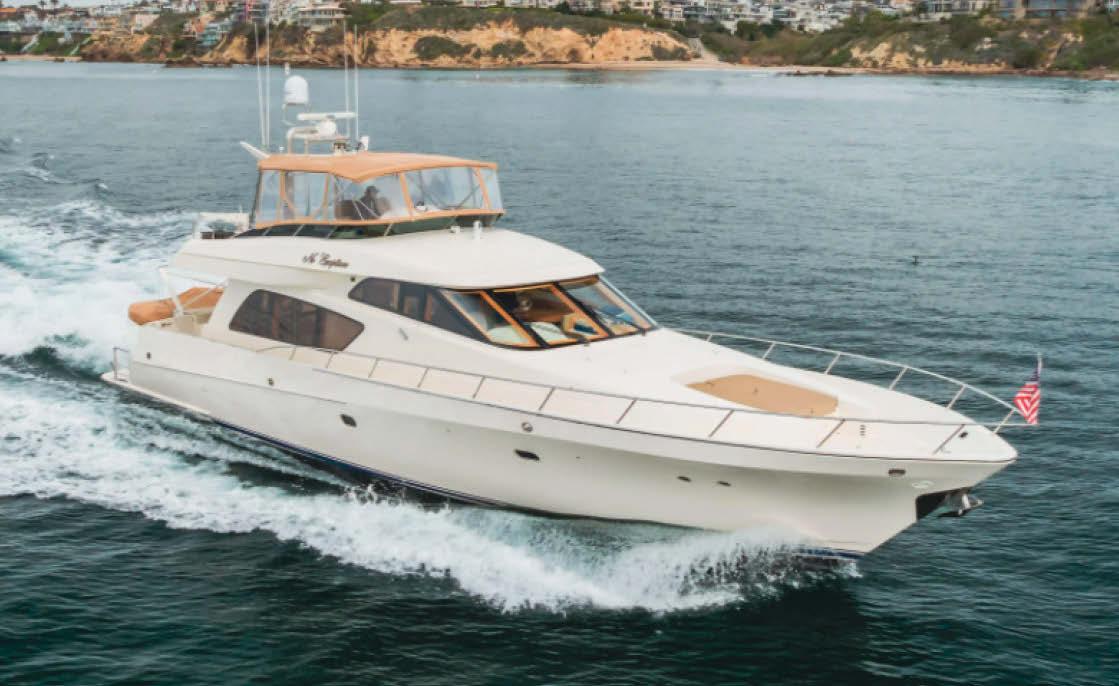




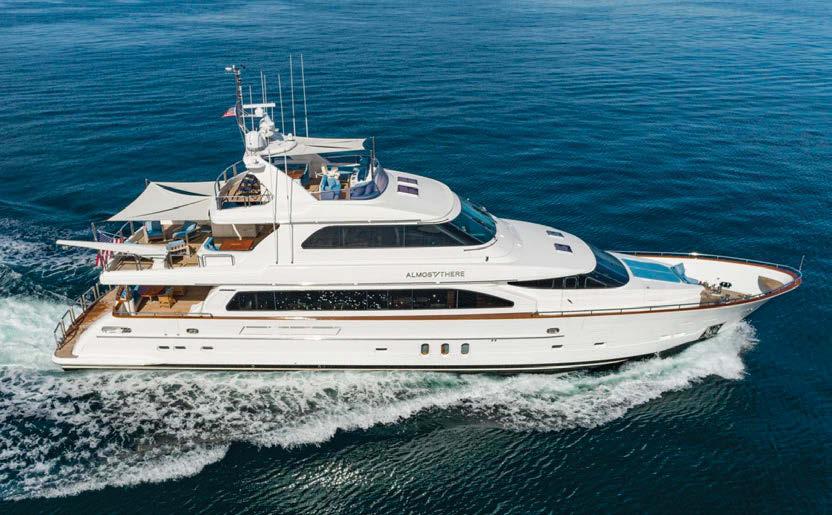


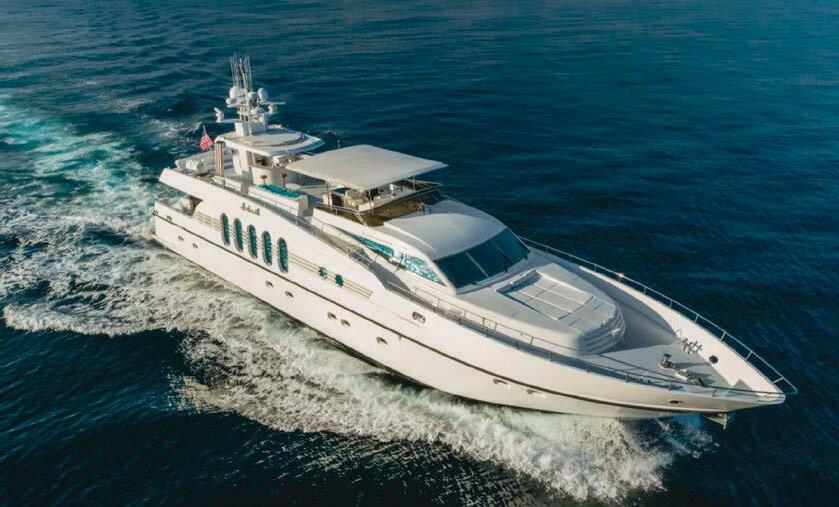
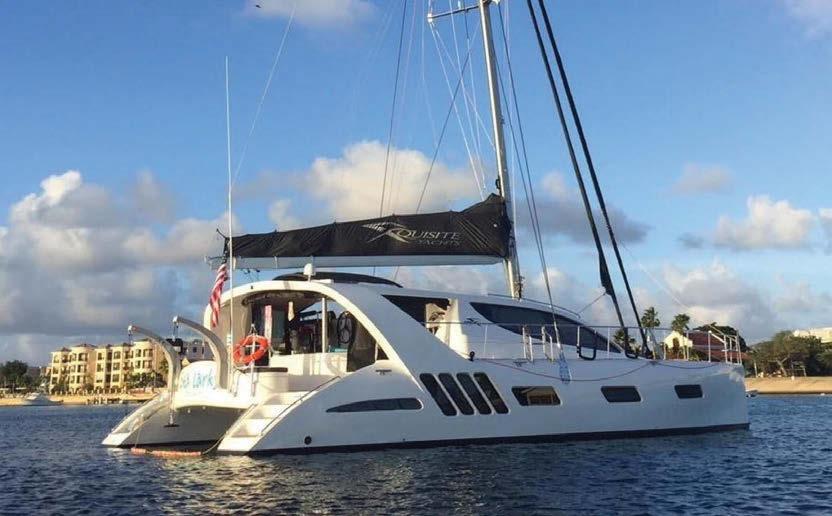

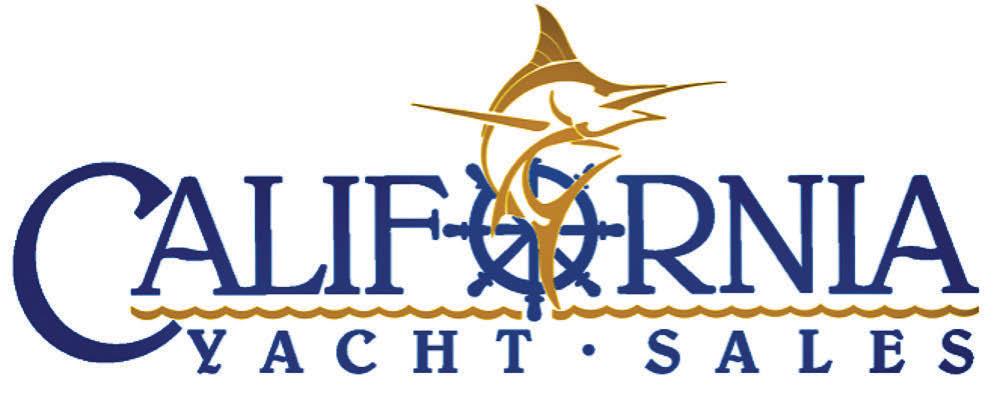
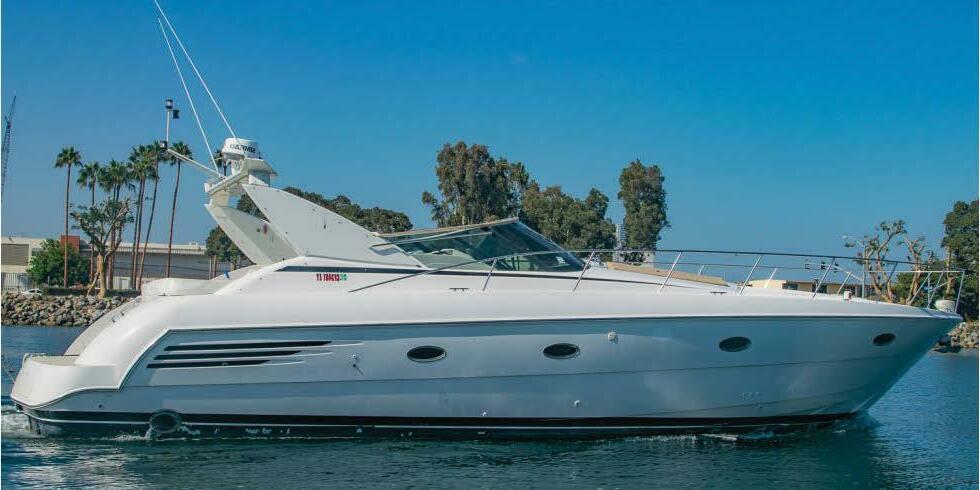


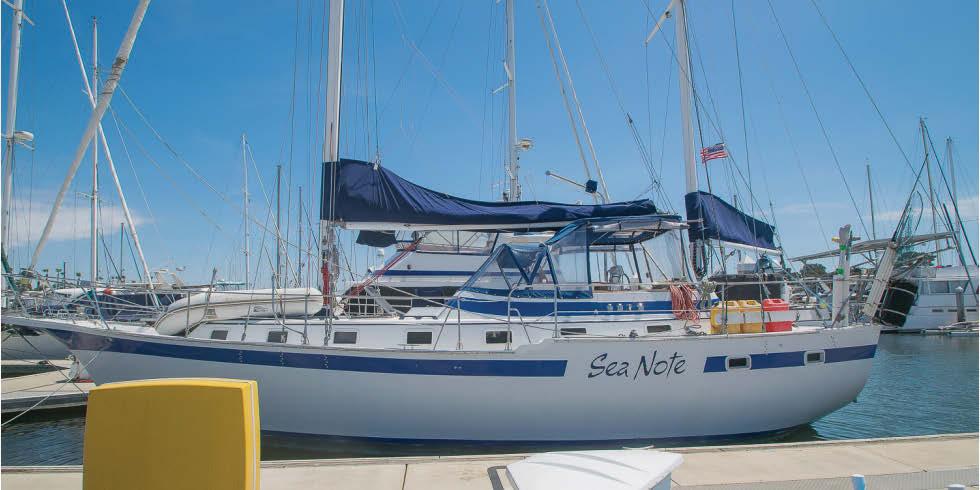












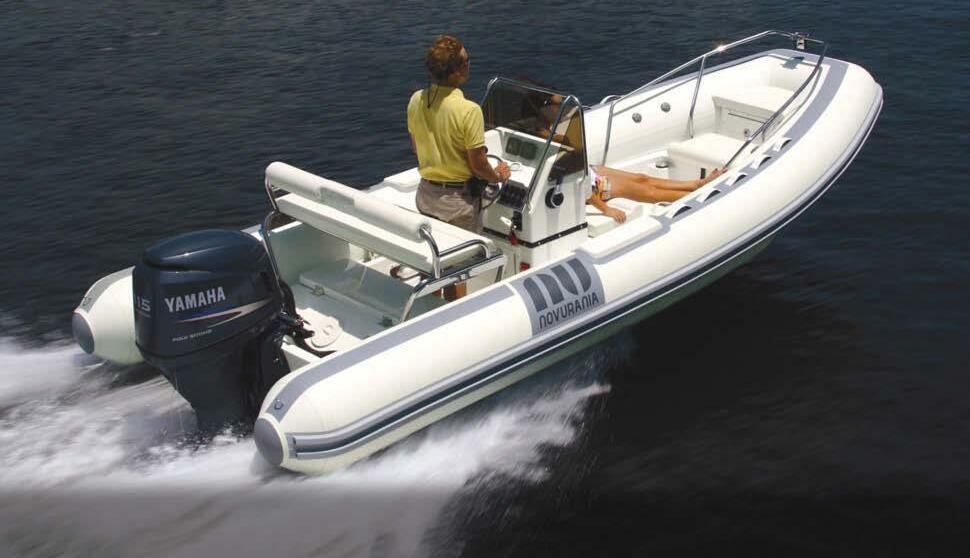
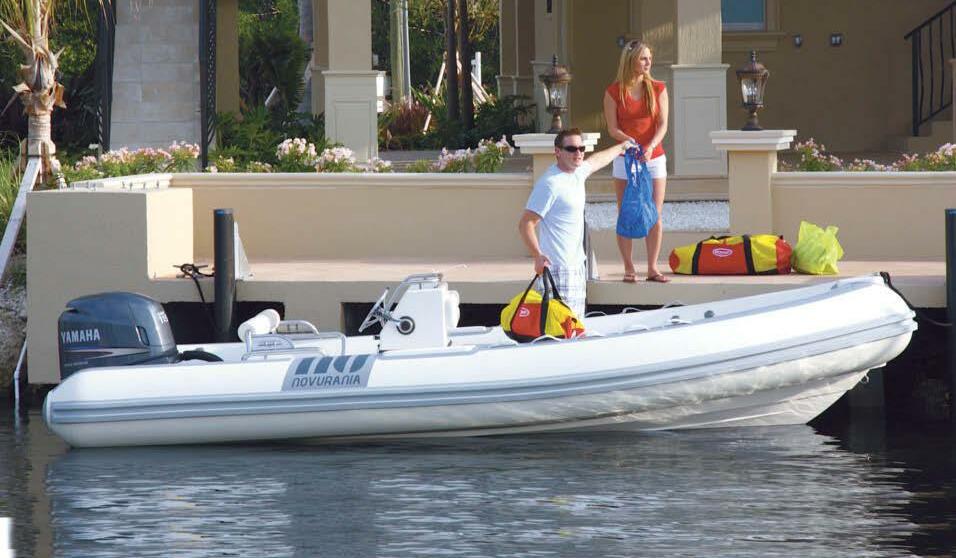











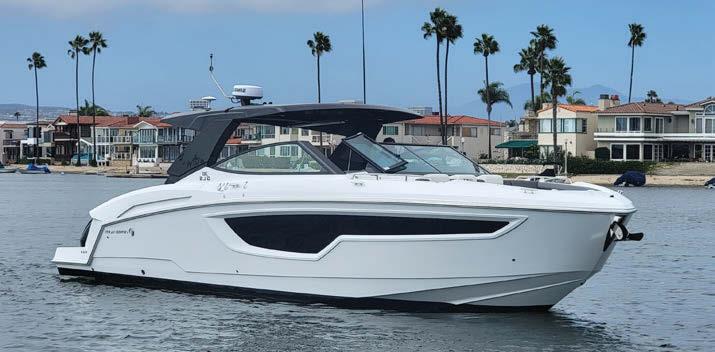
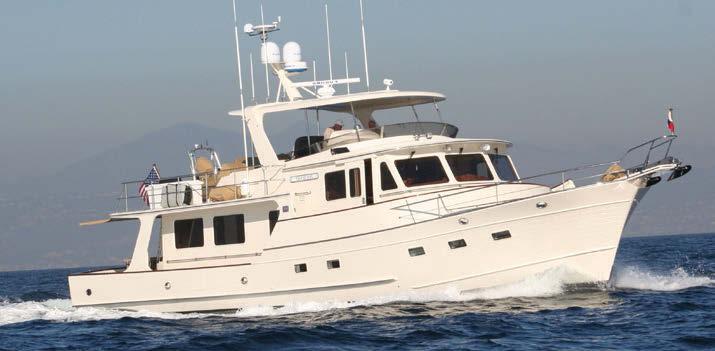




















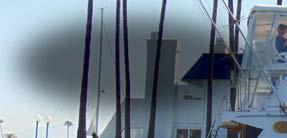

















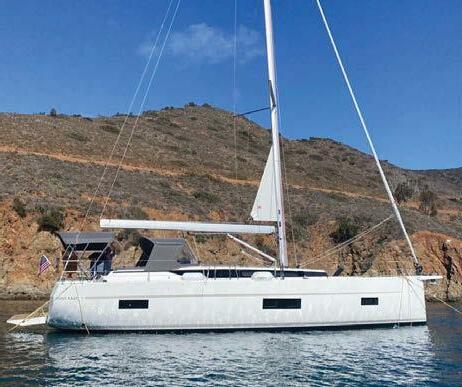

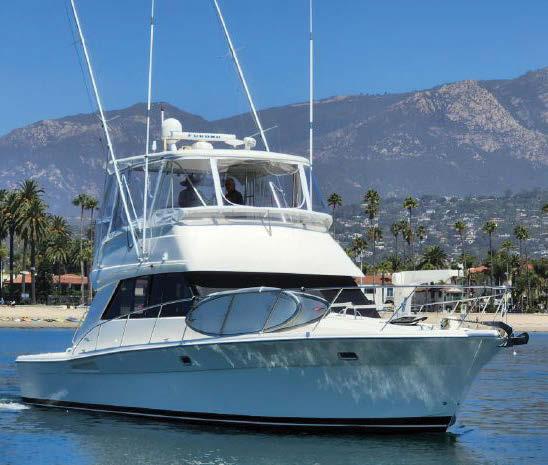


























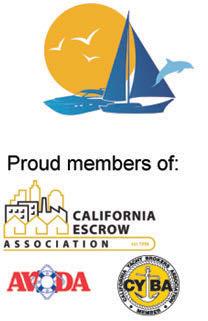

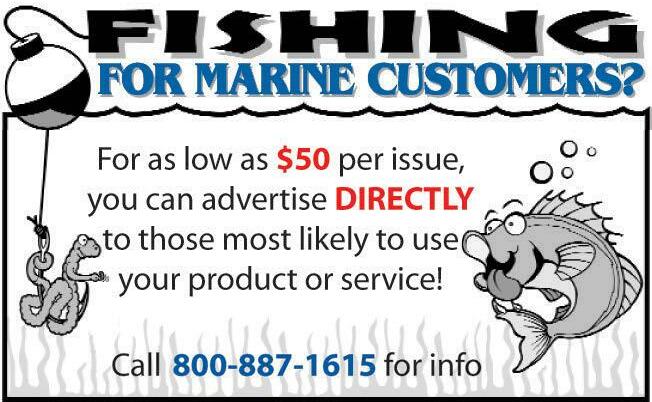




















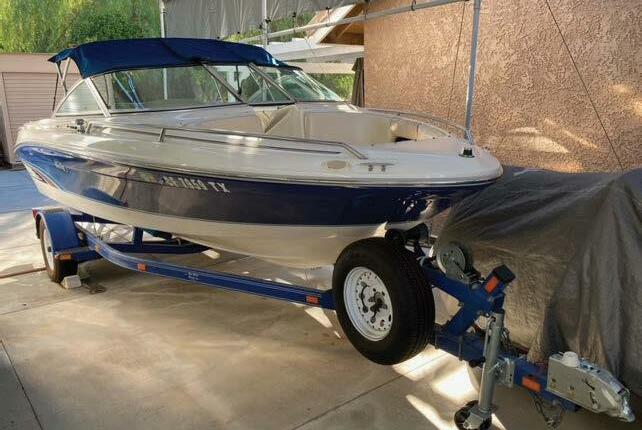

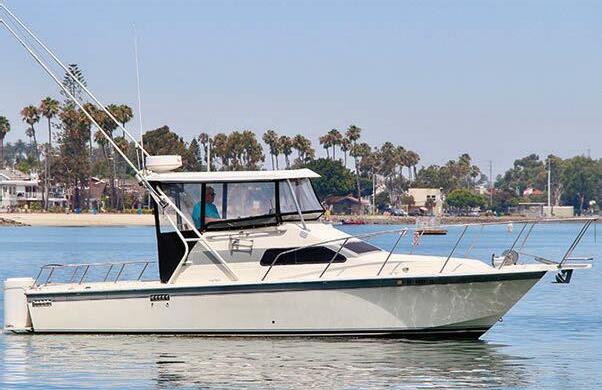
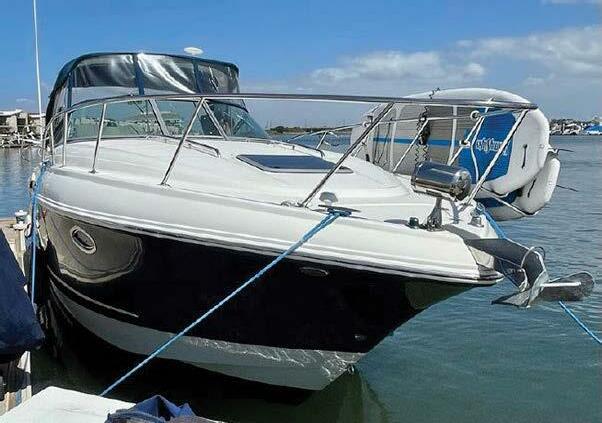


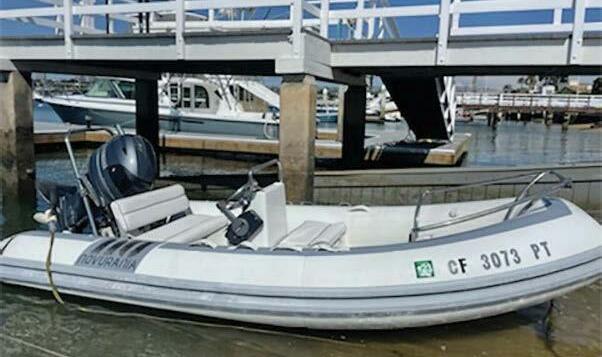







1994MACGREGOR26SAILBOAT: Invery goodconditionw/trailer.AtVenturaHarborin drystorage.Goodsailsandcushions.Recently serviced4HPMercuryoutboard.Water-Ballast, 6’Daggerboard.$7,500.Call/text435-602-9957.





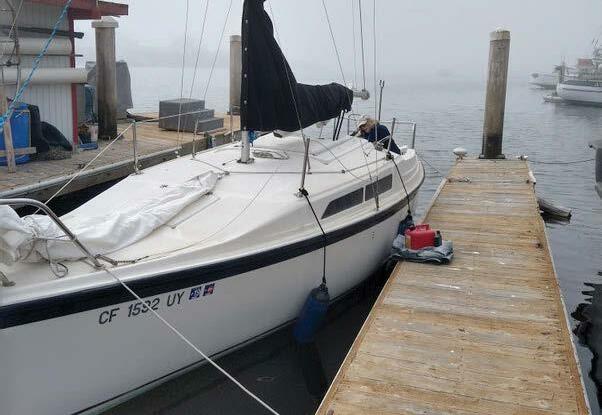

30’CATALINA1987: Verynice.UniversalX25 3-cyl.diesel.Wheelsteering.Lazycradlefor main.FurlingJib.Newsunbrellacanvas/Dodger 2020.NewStanding/runningrigging/sails2010. Simpson/lawrenceelectricwindlassandgypsy. Newlifelines2022.Raymarineautopilotand chartplotter.Perchseatsataftrail.Bottompaint 2021.3kwcolemaninverter.RidgidGarhuer Vang.Customfoldingswimstep.Oven/cooktop. Smallfridge/freezer.Top/bottomcleaned monthly.$27,500.949-701-0609.
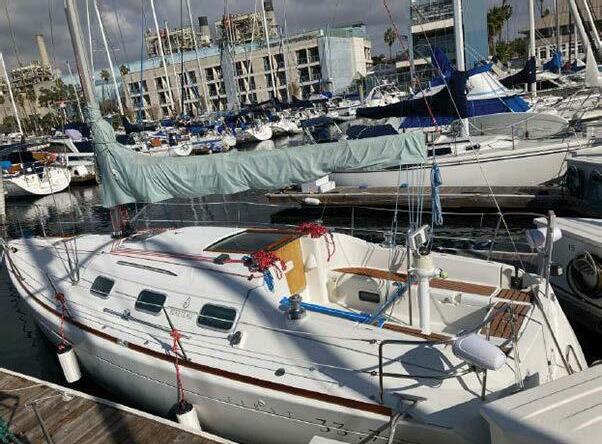






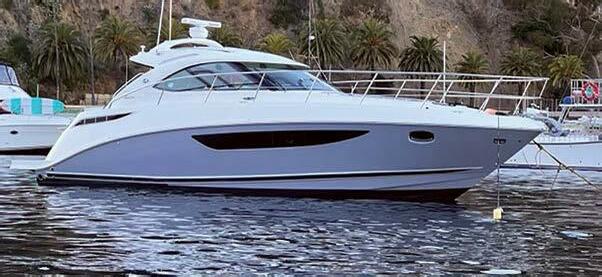

Mustsell!Diesel.rollerfurling,windlass, selftailingwinch,toomanyextrastoname. Needssomeattention&tenderlovingcare. Greatlivaboard.$10,000/obo. Text:949-933-1703
CenterCockpitw/roller-furlingmain,jib, bow-thruster.Ownerhassparednothing tomakethisaneasytosailbigboat. $79,000.ShorelineYachtGroup,Paul: 949-306-7135, cap10paul@aol.com
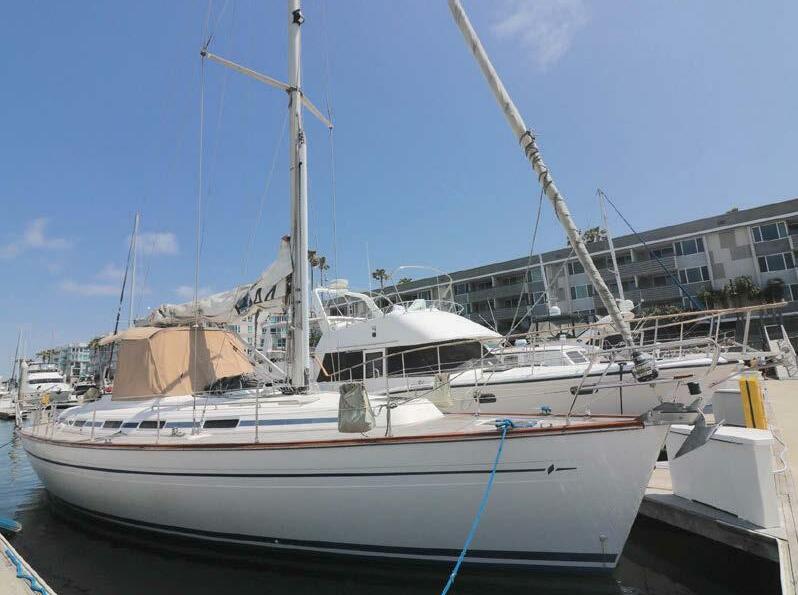
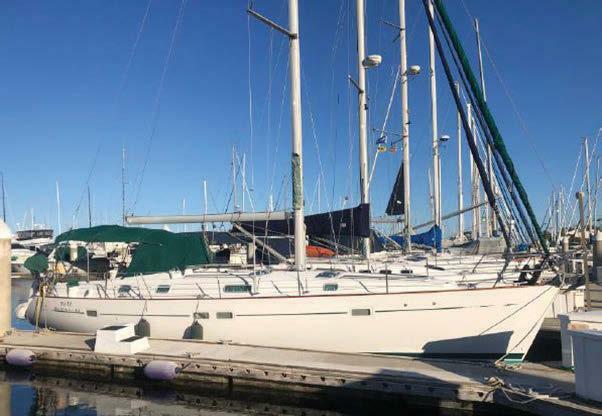
Twocabinlayout.Masterwithensuite head.Largedinettewithseatingforsix, plentyofstorage.Volvoinboarddiesel. $139,000.GerryPurcell:310-701-5960, PURCELLYACHTS.COM, GERRY@PURCELLYACHTS.COM.
PrimebackbaylocationinNewport Beach.Slipsandstorage. Callforavailability.949-673-1331 www.baysidevillagemarina.com

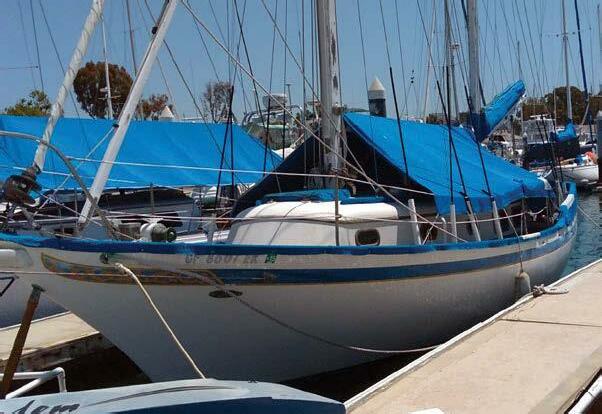
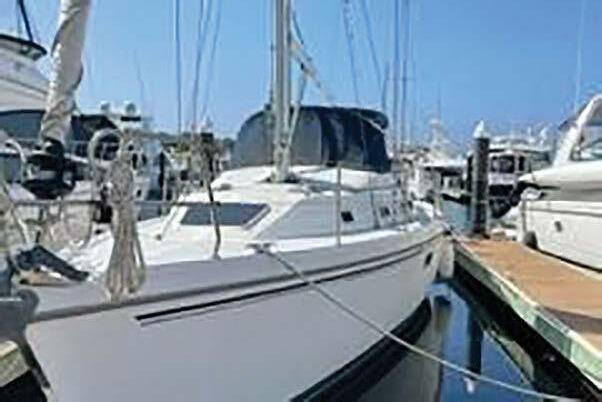



AVAILABLE
MainChannel,BalboaIslandnearthe ocean.Duffys,Sailboats,orPowerboats upto68feet.Call949-688-0299forsize availabilityandanyquestions.
PIER32MARINA,SANDIEGOBAY: Callfor slipavailability619-477-3232oremail office@pier32marina.com


POINTLOMAMARINA-SANDIEGO: Callfor slipavailability.Call619-718-6260oremail office@pointlomamarina.com
PUTYOURSAILBOATINTOCHARTER in DanaPointHarborwithAventuraSailing Association.Haveyourboatmakemoneywhen youaren’tusingit!Slipsavailable.949-493-9493, membershipservices@aventurasailing.com
SANDIEGOMOORINGCOMPANY: Visit our websiteforinformation&applicationwww.sandiegomooring.com orcall619-291-0916.
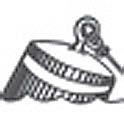
WANTEDMOORINGATTHEBYCMOORING FIELD: PleasecontactJoeat626-343-2823, celldirect.Willingtopurchaseandclosethe samedayThankyou.
LIGHTHOUSEYACHTMARINA:

808-339-4116, tlhamilton@hotmail.com



ISLANDYACHTANCHORAGE:
LONGBEACHSLIPS&END-TIES25’-50’: NO LIVEABOARDS.HarborLightLandingMarina, viewsofdowntownandQueenMary.Call 619-807-7245.Email: lance@harboryc.com


MARINACORTEZ-SANDIEGO: Stunning location,improvedamenities.10’-120’slips, endties,andsideties.30’SlipsavailableNOW. Call619-291-5985.
ISNEEDED forPurcellYachts.Email resumeto gerry@purcellyachts.com thencal 310-701-5960.
BOATCAPTAIN&DISPATCHERNEEDED: SanPedro.USWaterTaxi.Wearelookingfora BoatCaptain.Musthave100-TonMaster (required).Formoreinformationcall310-5198230oremail jflores@watertaxius.com
IBUYUSEDMARINEELECTRONICS: Text photosorcall619-962-6969.Email rickabristol@gmail.com



IDEALWINDLASSV2AMOTOR
Complete.Neoprenecapstan.12v.NonReverse.Newprice:$4,800.Asking $1,600.Justremovedfrommyboat. CallChuck:760-518-5148


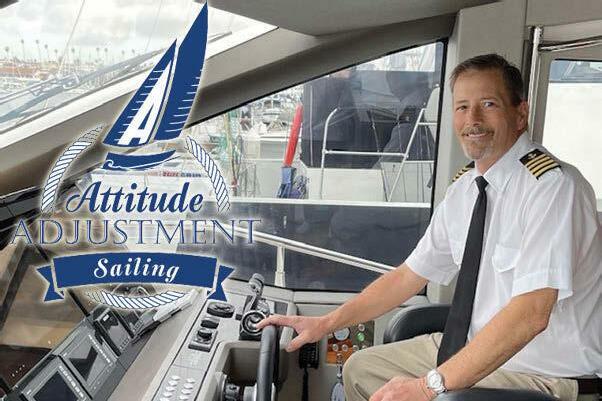


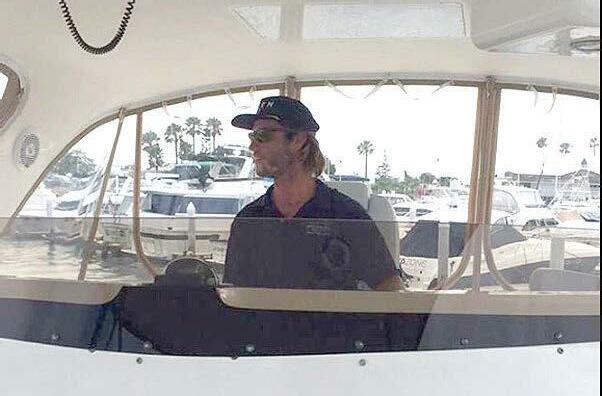


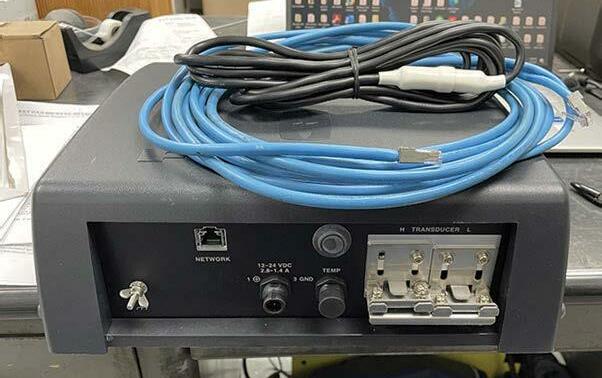
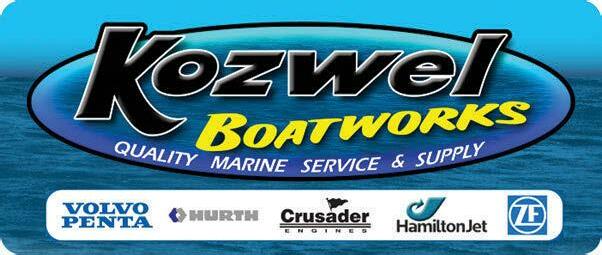

The team at Hawthorne Marine Power has a unique understanding of the wants and needs of the recreational boating owner and the engineering crews who run them. From marine engines to gen sets, power solutions and Genuine Cat® parts, Hawthorne Marine power provides a one-stop solution to keep you up and running. Plus, were backed by the global network of 500 Cat dealers, so anywhere the sea takes you, we have you covered.





